An early start. The gondola is not working which means an extra two to three hours walking, but we have gained as much height as we could with Dora.
We pack up and head off.
For speed, we have decided to walk up the ski slopes. They don’t provide the most beautiful of walks, but they are steep, so you gain height quickly.
They also aren’t that relentless. You get quite a lot of change in pitch. When in is too steep to tackle directly we zig-zag up the slope.
There are still patches of snow this low down, which means it will be fully carpeted higher up.
Looking back and you get to see how rapidly you climb, and you get to appreciate the magnificent terrain.
But you also get to appreciate another aspect of this landscape, the devastating effects of skiing.
Huge swathes of the forest have been removed, exposing the fragile ground below. This is sometimes held desperately together by meadow grasses, but a lot of the time even these don’t survive. The constant pounding of the piste bashers and the melt water of the snow add to the erosion of the soils. Gullies are cut diagonally across the slopes to funnel the water away, causing even bigger gullies to form further down.
Obviously the financial benefits to the area are enormous, so maybe the environmental consequences are brushed under the rapidly eroding carpet.
The financial benefits will be felt now, the environmental consequences in the long term. It is quite tempting to forget the latter. SM
Probably Bulgaria is no better or worse than some of its riches neighbours, but even though, like many, we partake on the odd skiing holiday, its impact has always concerned me; all that infrastructure, the hotels, the seasonal workers, for four months of the year.
The higher we get, the more snow there is.
We come around the corner, and what do we see? The cable car, and the gondolas are moving. Just our luck, we could have saved all that time after all. And then we notice the chairlifts are moving too, that is strange.
But our plan is working, before long we get to the top stations of one of the chair lifts where one of the operators is hanging out with his dog. If the gondolas are working today we can get it back down and spend more time on the mountain.
No they aren’t, they are just testing them out, making sure they don’t seize up. I suppose they have to do that every day, stop the rust settling in!
Getting to this point also means we shortly see the top station of the gondola, it shouldn’t take long from here.
The trees are starting to thin and the views are improving. We have once again been really fortunate with the weather. Clouds do seem to build up in the afternoons here, and the odd thunderstorm rattles around the valleys. We had one of those weird ones the other evening with lots of lightening but no sound.
We pass under the gondolas, they are tiny, for just four or six people. This place doesn’t have as many facilities as Bansko but it has some good slopes, maybe we will put all our concerns about the environment behind us and see what it is like one winter!
Notice the bare earth and the deep indentation of the tracks from all the machinery. It is fine when there is snow on the ground, but why drive up and down now?
Because there is still snow further up!
Our first sight of the head of the valley, our first sight of the mountain.
We have saved some time but we still have a long way to go.
We press on.
Soon we are up amongst all the skiing crap, the gondola has stopped again, no one is around.
At least we are off the ski slopes now, the tacky fake alpine huts serving pizza and burgers are behind us and the path is a gentle down hill slope.
But now we are on snow. It is wet and sticky and occasional gives way as you plunge into a deep hole. At least we have our gaiters on.
It is hard going.
The ski infrastructure continues. This won’t be used for another seven months.
But that is a pretty steep and long drag lift.
Soon even that is behind us.
But there are still lots of snow slopes to cross.
We start to get glimpses of the refuge in the distance.
What a beautiful landscape, intimidating but beautiful.
Behind us we can see a deep valley, probably our return route. We don’t fancy the climb back up to the ski stations, nor the steep, gravelly paths slopes down.
Just before the refuge, a lake filled with ice cold melt water.
We gingerly cross its streams!
The melting ice is particularly lovely.
Which is not a word I would use to describe the refuge. It looks like they get plenty of summer visitors.
The place is eerily quiet, just us in this grand amphitheatre of rock and snow.
They are building more structures up here. Is this any different to the ski stuff further down the valley. This will also be only used for four months!
It has taken longer than we expected to get to this point. Although we saved time on the ski slopes, we lost it wading through all the soft snow. We head on, but we are a bit subdued.
We climb rapidly and the refuge is soon well below us. We can’t find the path, but we vaguely know it is up here somewhere. Our route description describes two routes; one summer and one winter. We are in neither, we choose winter and the snow means we can head up steep slopes, but it is very heavy and slow going.
We reassess our situation. Today, Musala is not going to have any visitors to his summit, not us anyway, we decide to call it a day.
It is a lovely mountain, due able but, in these conditions, it would take us double the time. We could well be coming back at dusk. Besides, the hike will be incredibly tiring and tricky. This time, the summit rewards wouldn’t overweight the risks and the efforts. SM.
Maybe, in hindsight we should have known this earlier, and chosen another route up the other side to a lower peak. One to remember for another day.
We lollop back down the slope, back to the refuge. Someone else has made it up this far.
We continue down the valley. We are at a lower altitude here and the snow is softer. The going is exhausting.
Soon the snow starts to thin, in its place rivulets of river water that need to be negotiated.
And violent streams, it looks like we could be getting cold wet feet. Hopefully the gaiters will give some extra protection.
Water is coming from everywhere. It must cause a lot of erosion.
The ski slopes look a real mess. Perhaps grasses will re-establish later on in the summer.
The main river is so turbulent, and yet we need to find a way to cross. We don’t fancy wading, it must be bitterly cold.
Thankfully there is a rickety old bridge, water splashing up between its timbers.
That is an impressive amount of water.
Two young girls come up the path. They are heading to the refuge, hoping to do the summit tomorrow.
They have no equipment and are only wearing lightweight trekking shoes. So far they have not been on a lot of snow. We describe the conditions. Maybe the route up to the refuge will allow them to reflect. I think they will be getting really wet shoes!
It is now an easy, but boring path down through the forest, along wide tracks.
Apparently this is a ski run in winter. Quite narrow and sheltered, they must get a lot of snow here.
We finally reach Dora. It has been a long day. It is five pm. We were right to turn back. It would have been another two to three hours to the top, maybe more, plus the return.
We drive back an hour to pick up our laundry and then head north to another small town, Kyustendil, where tomorrow another new country beckons.
We leave the turbulent river behind us.
GDR

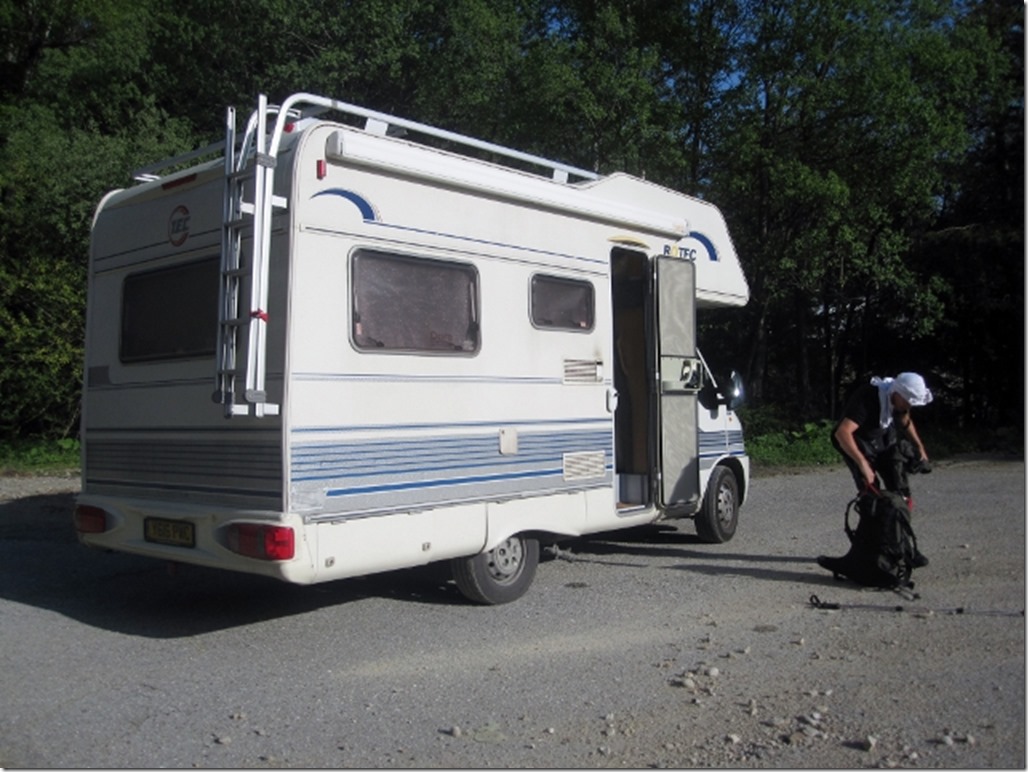
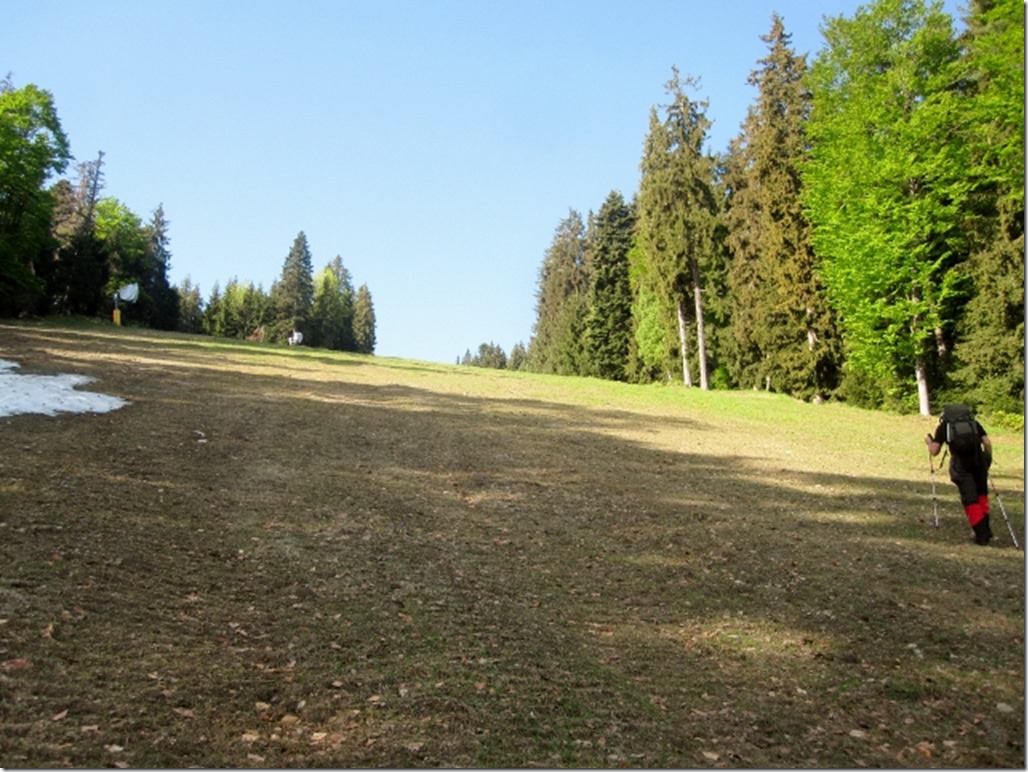
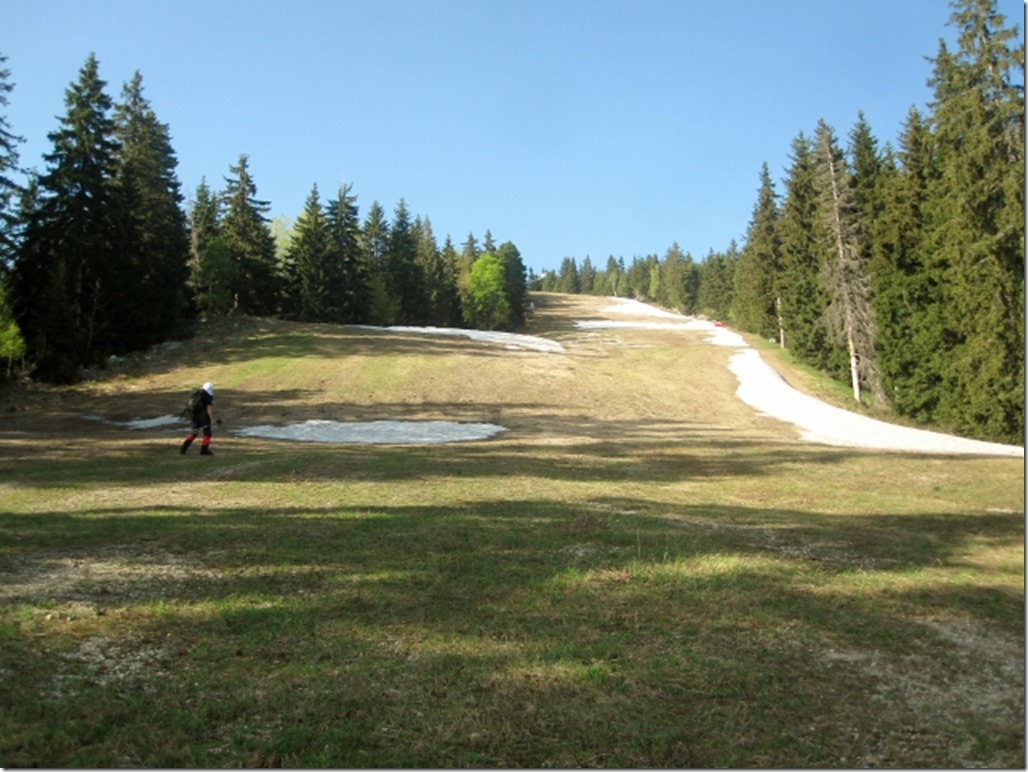
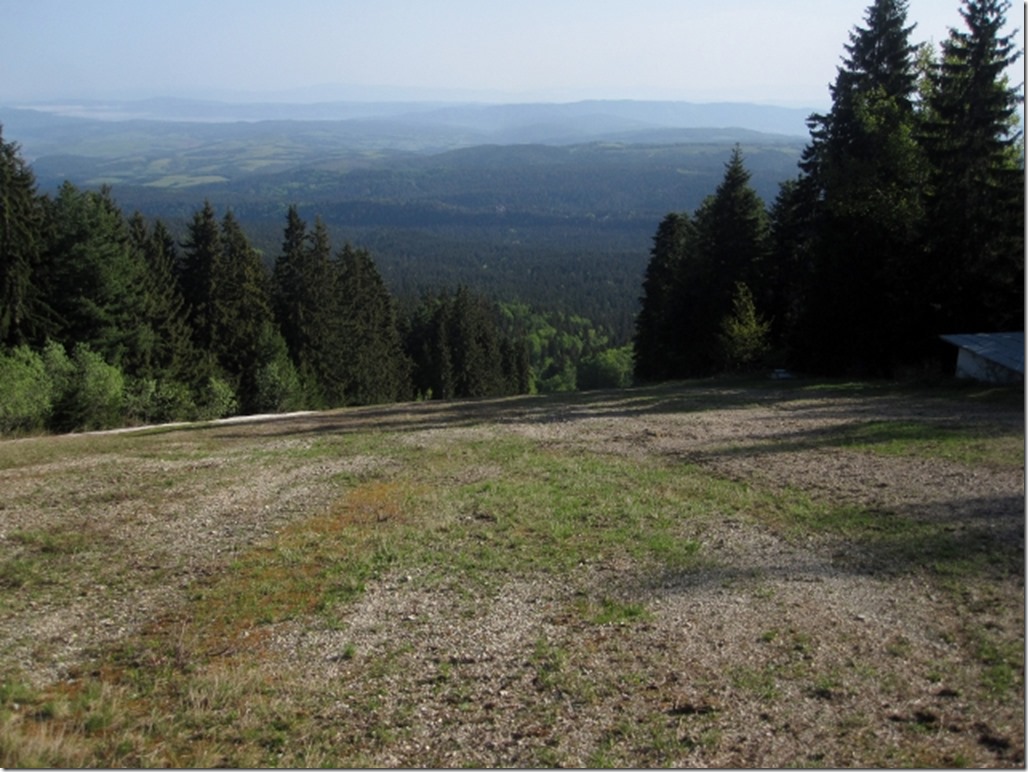
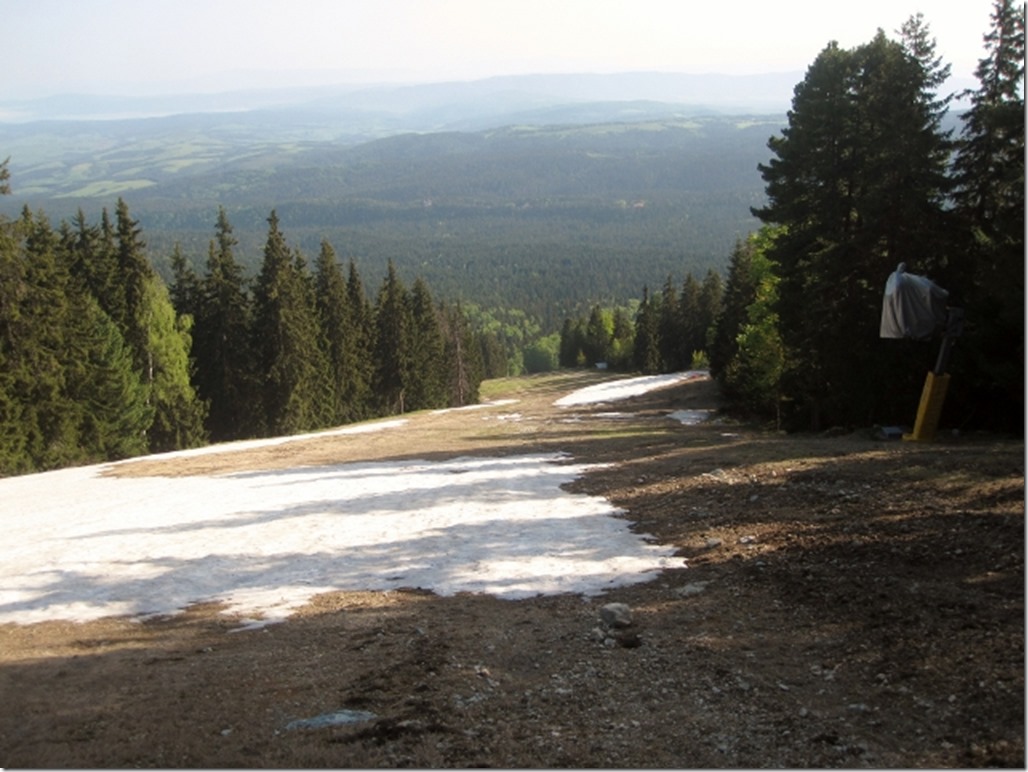
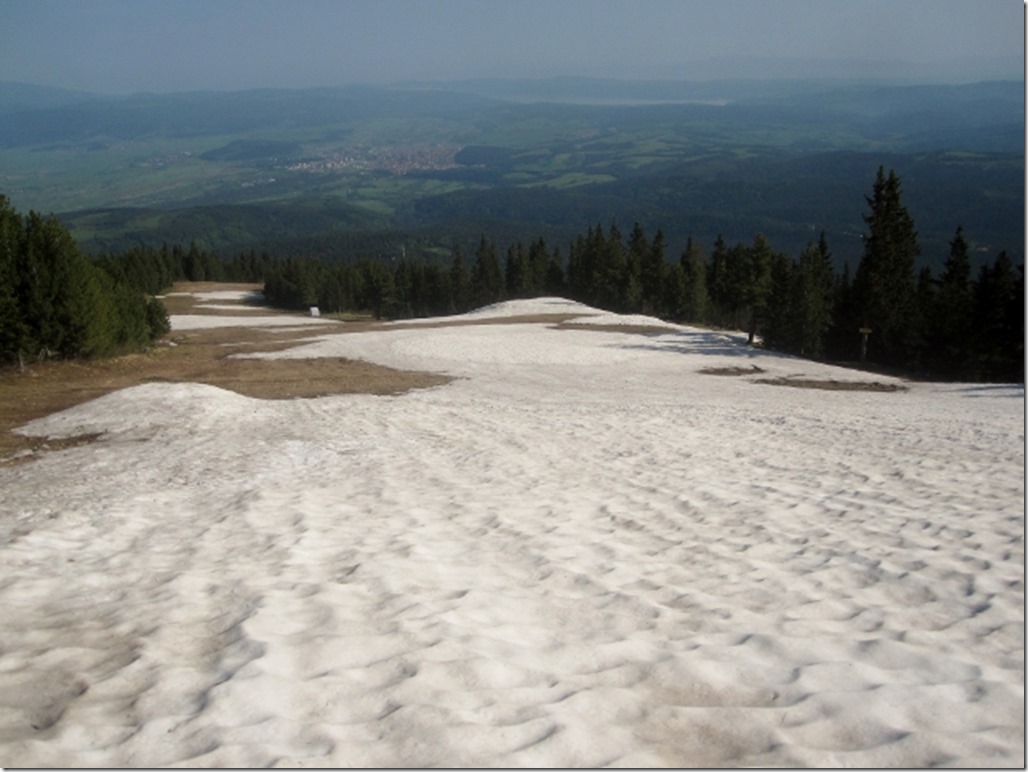
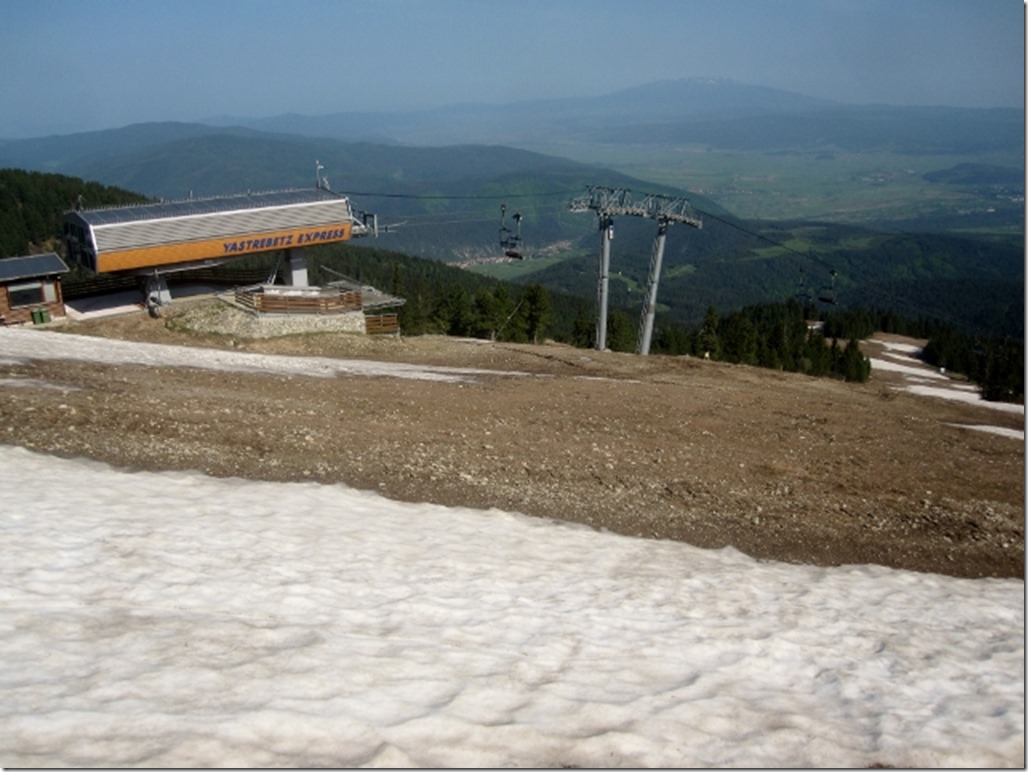
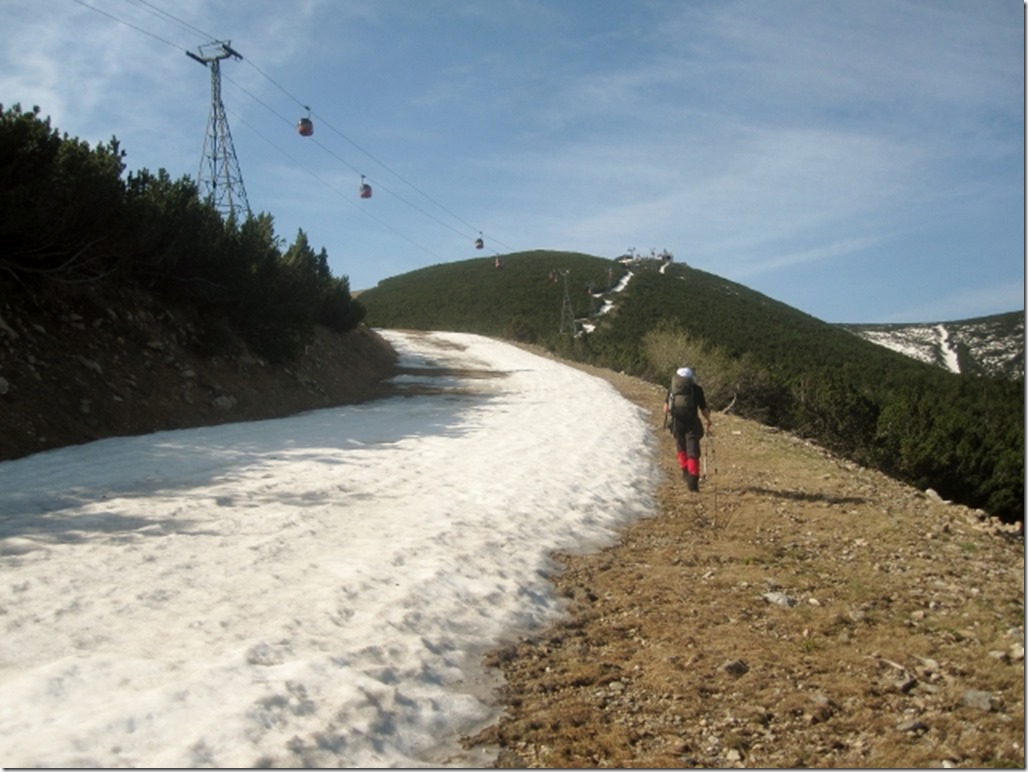
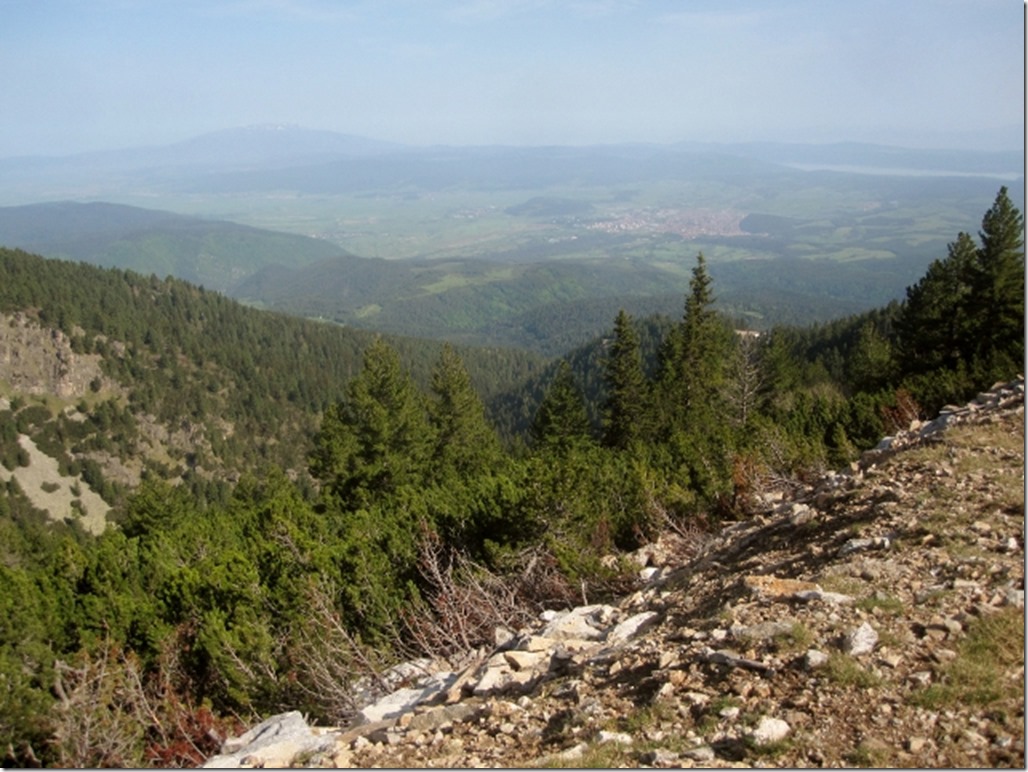
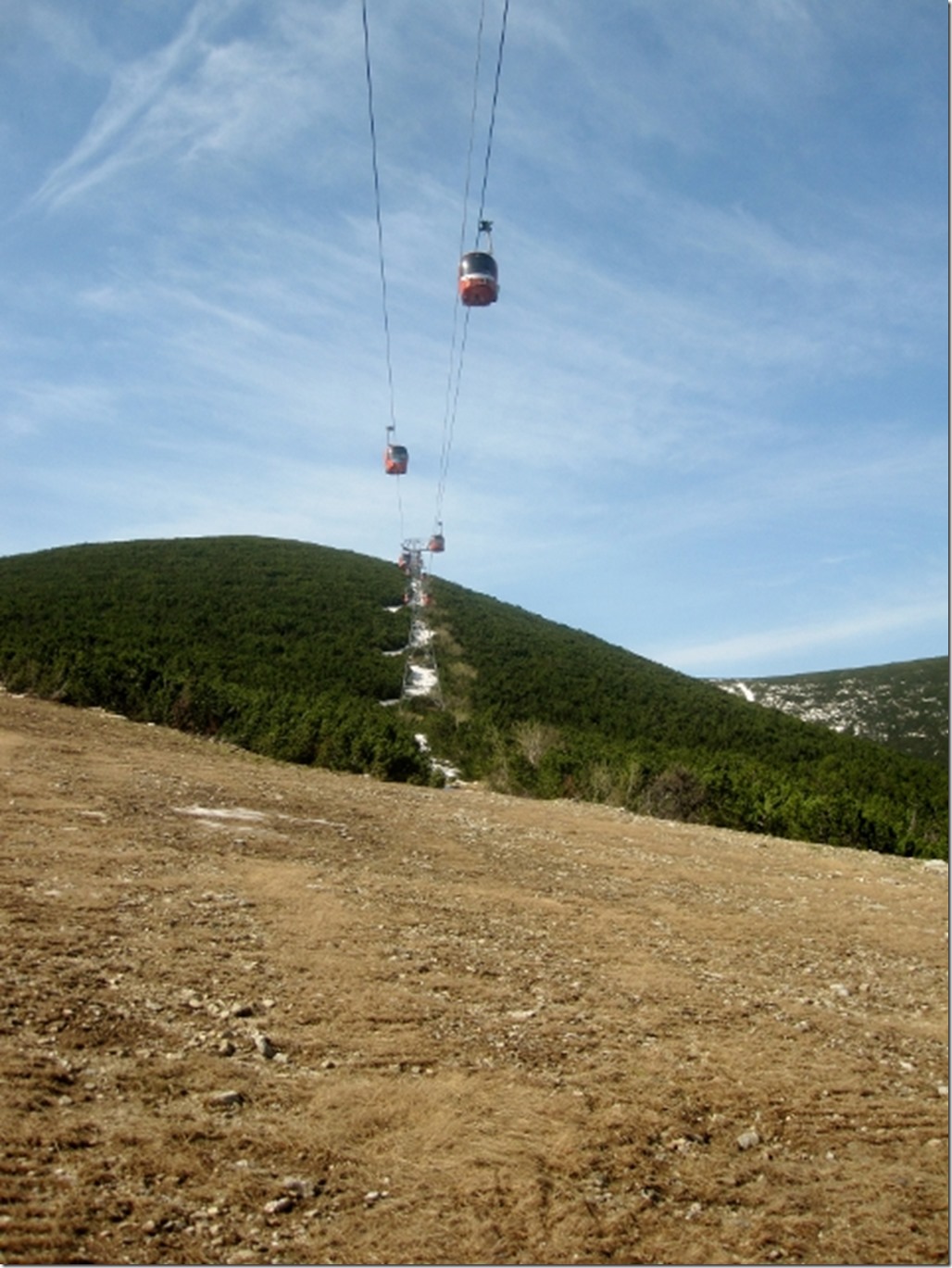
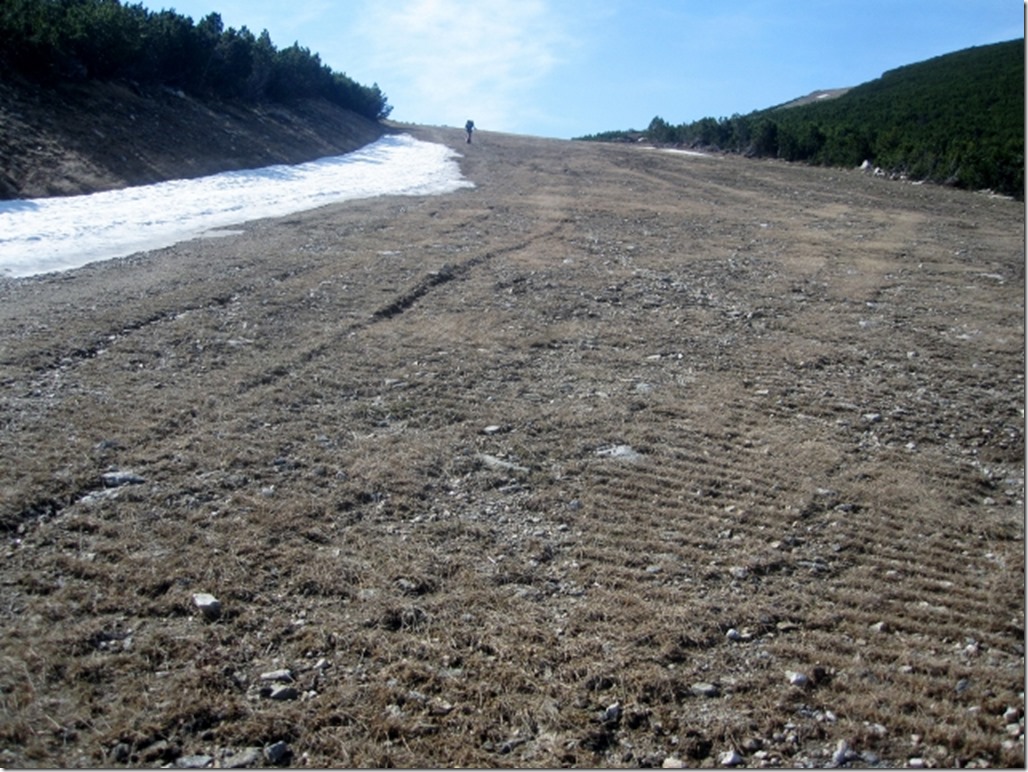
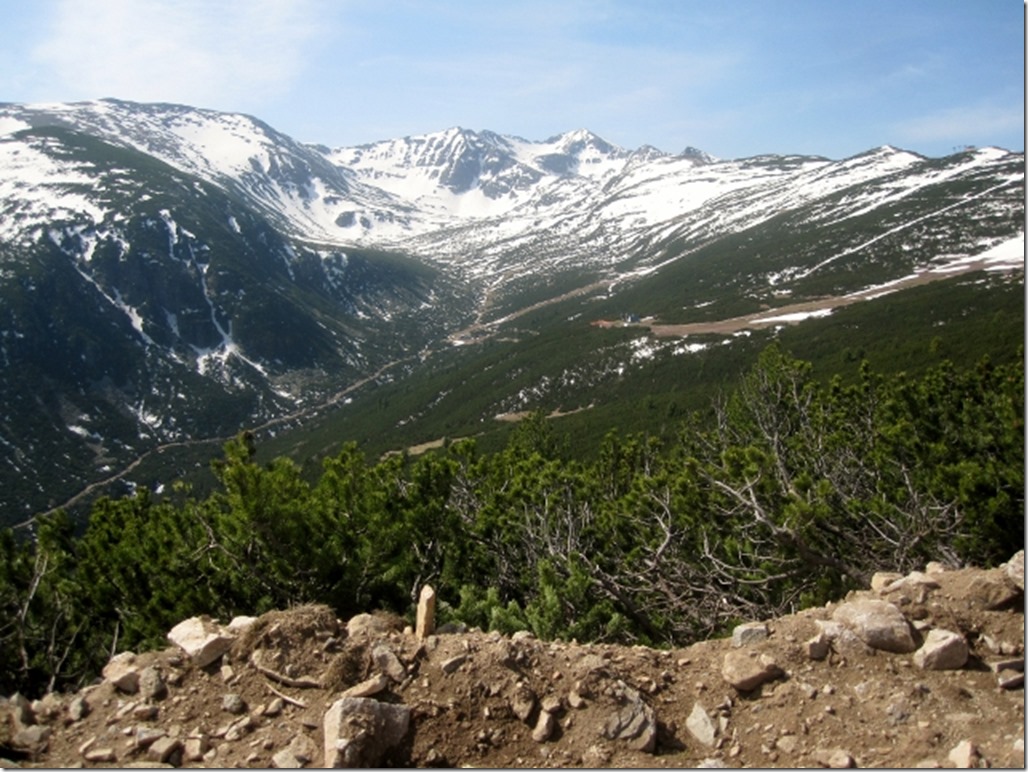
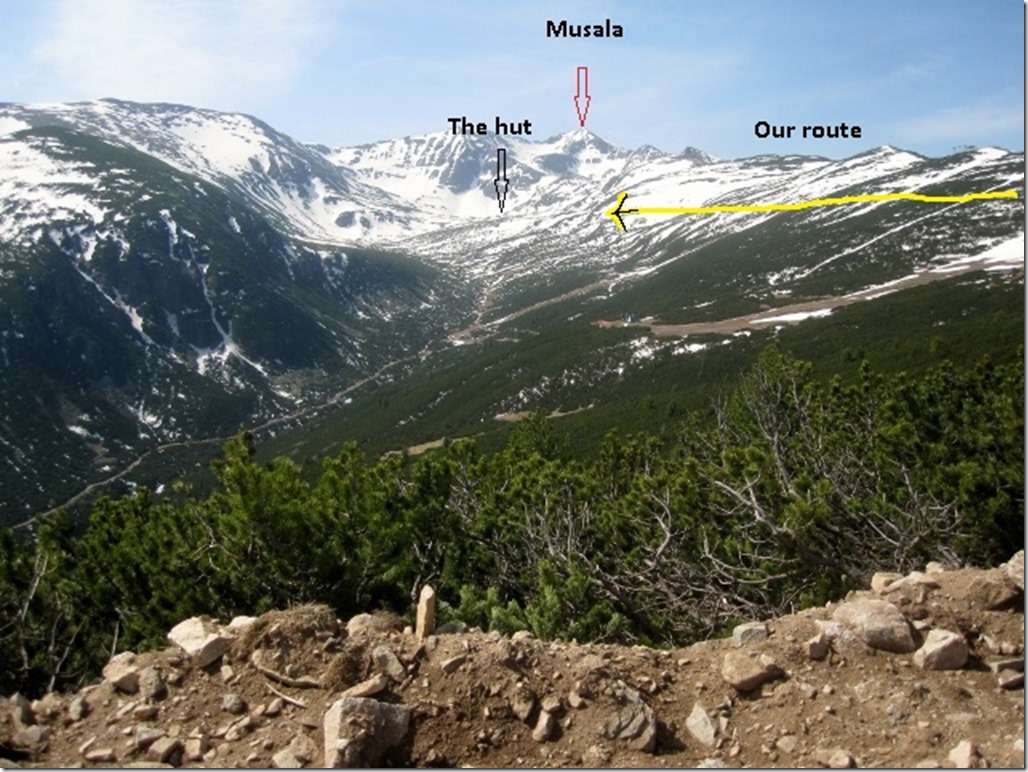
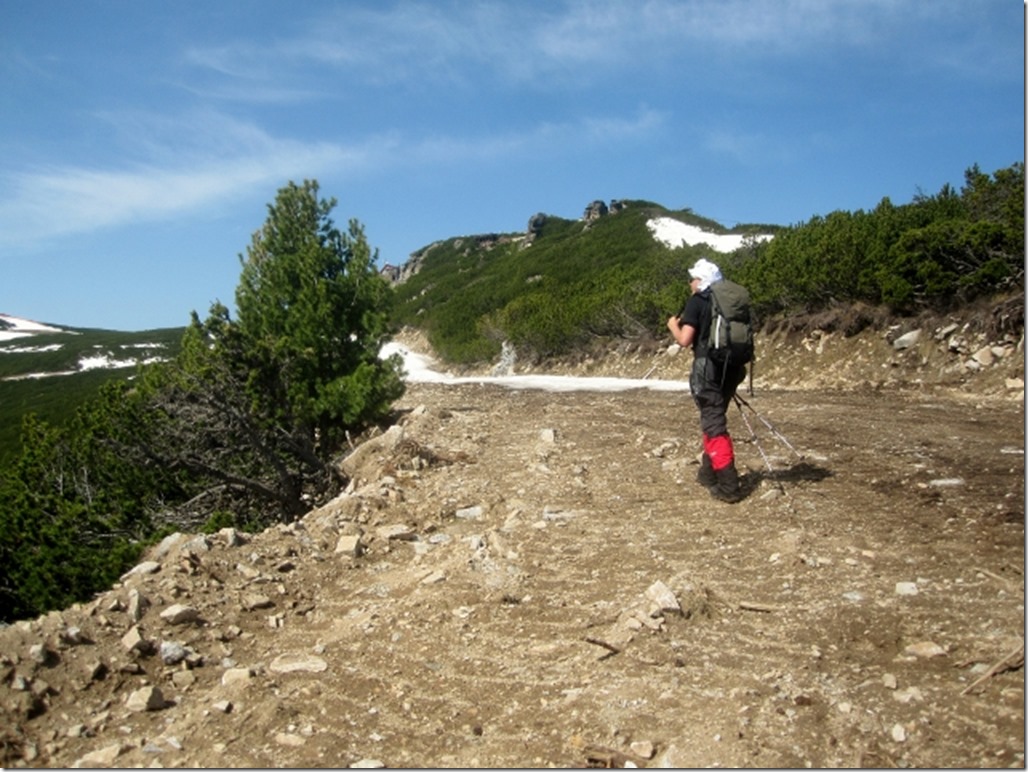
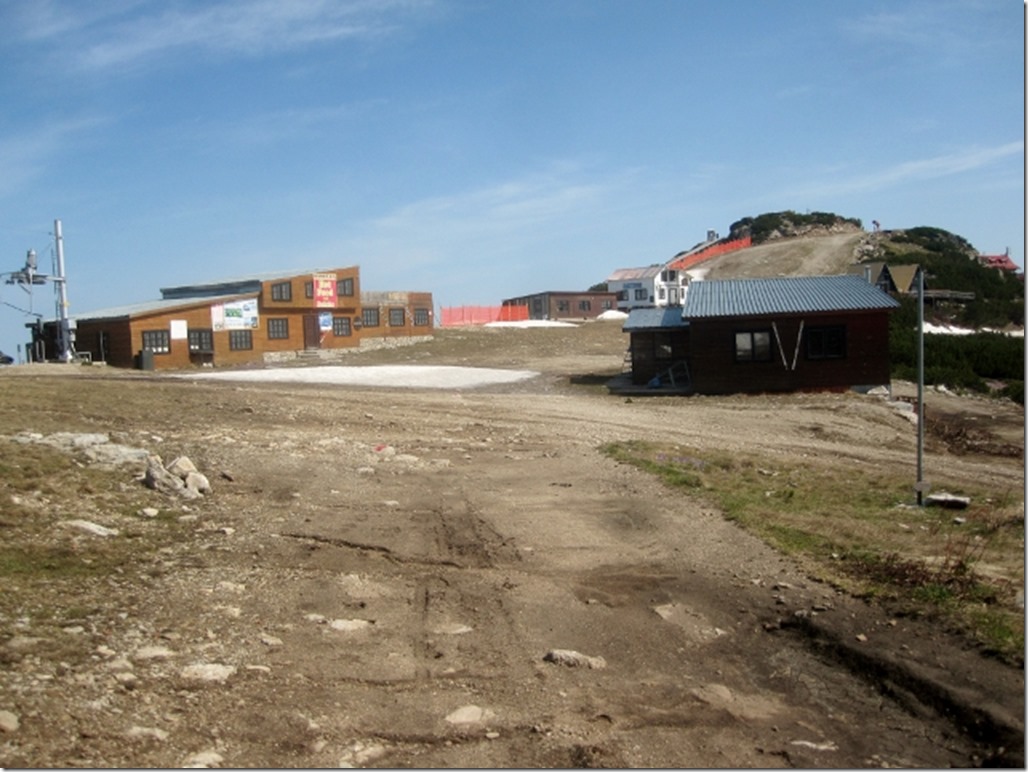
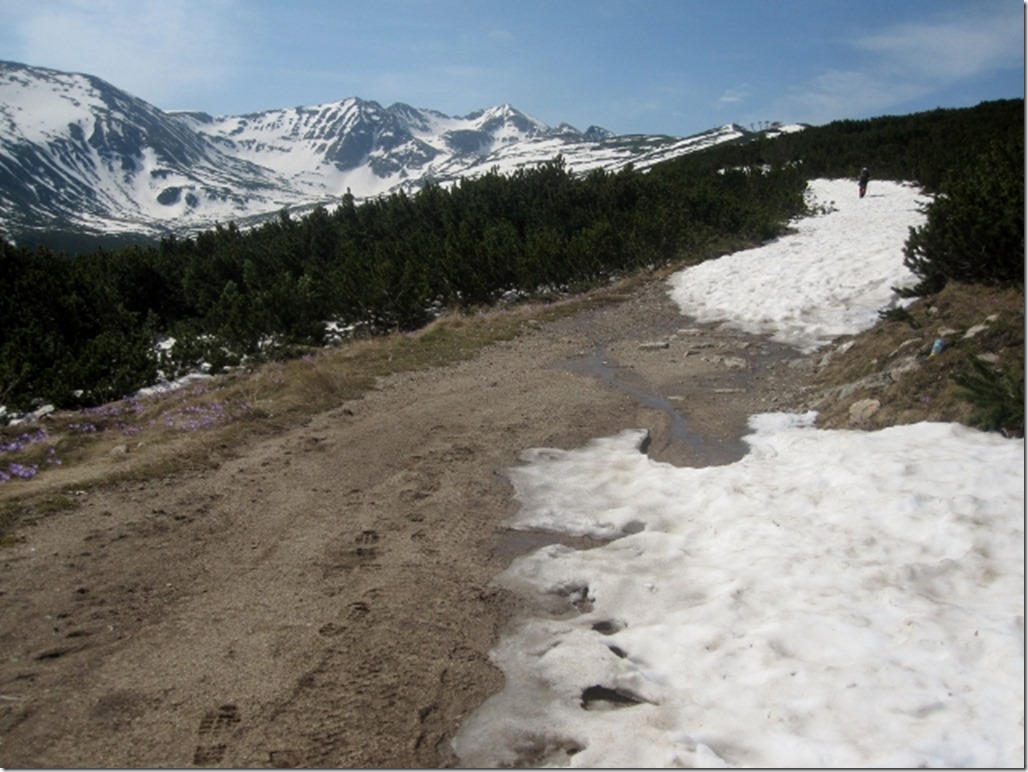
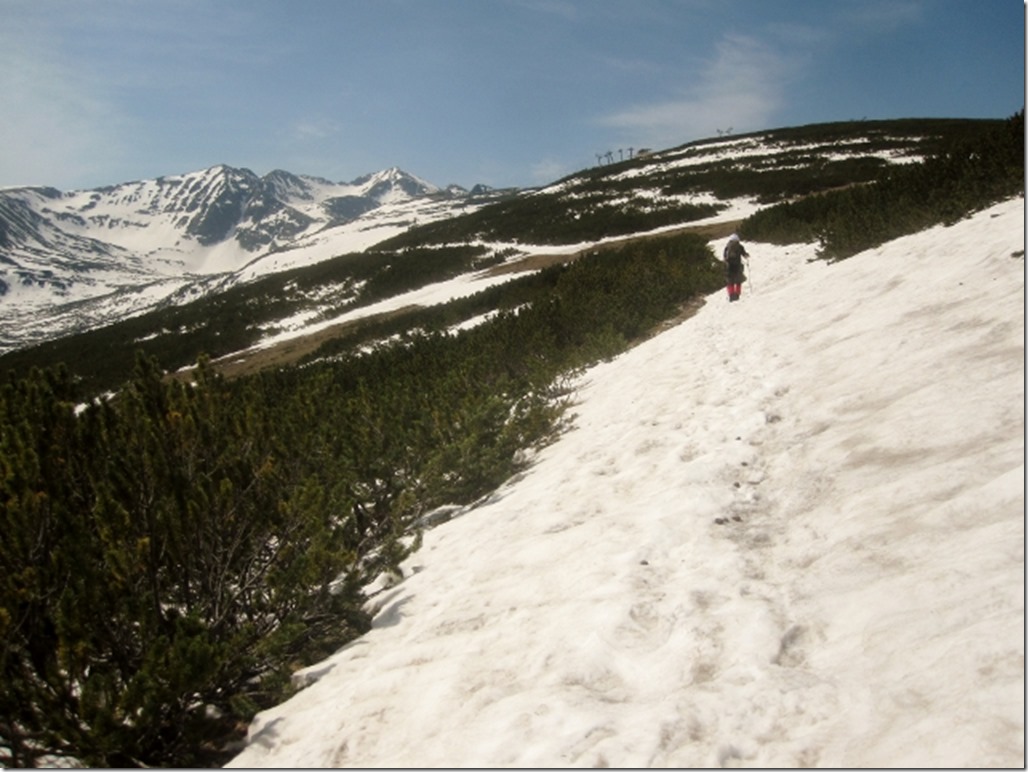
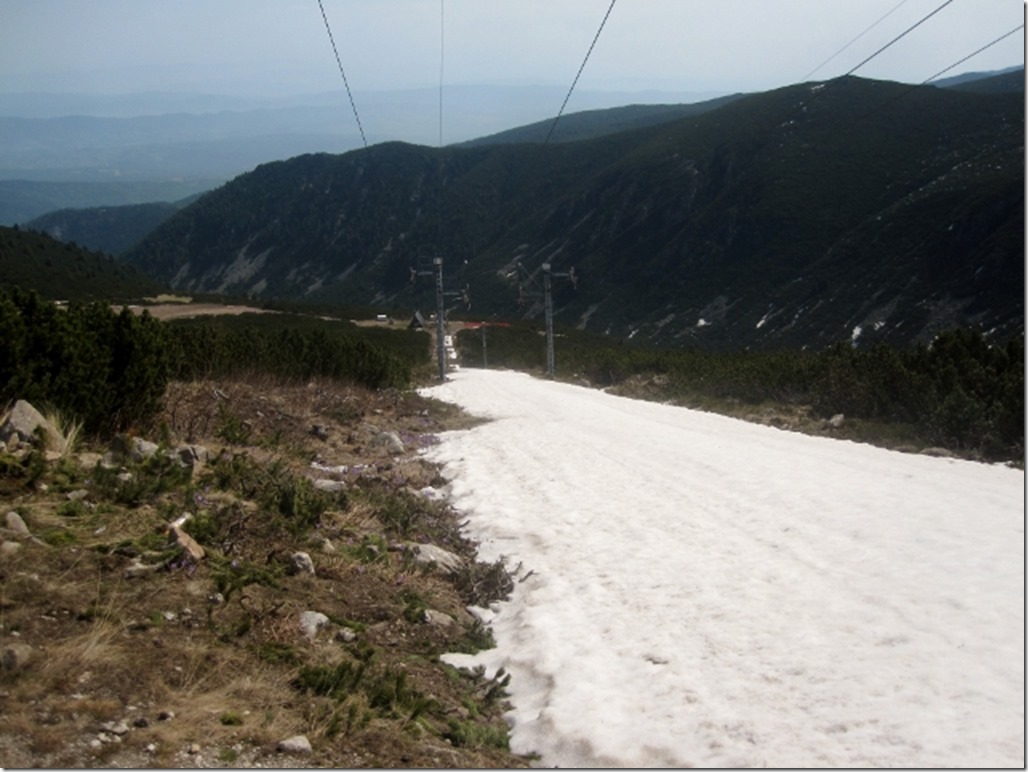
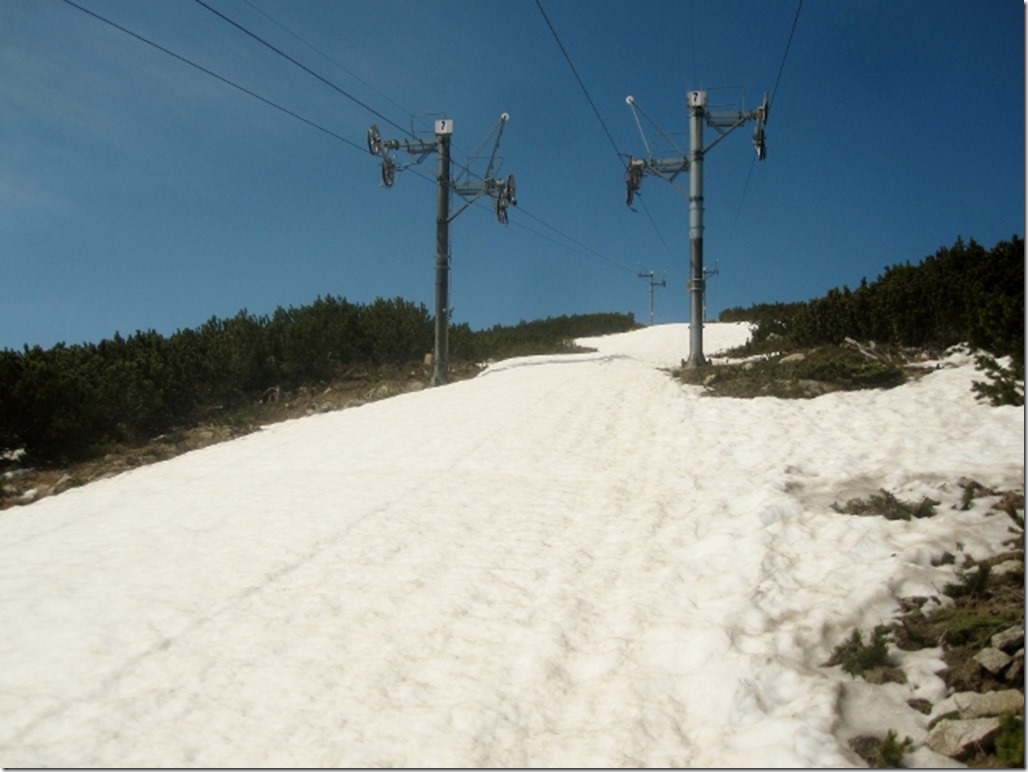
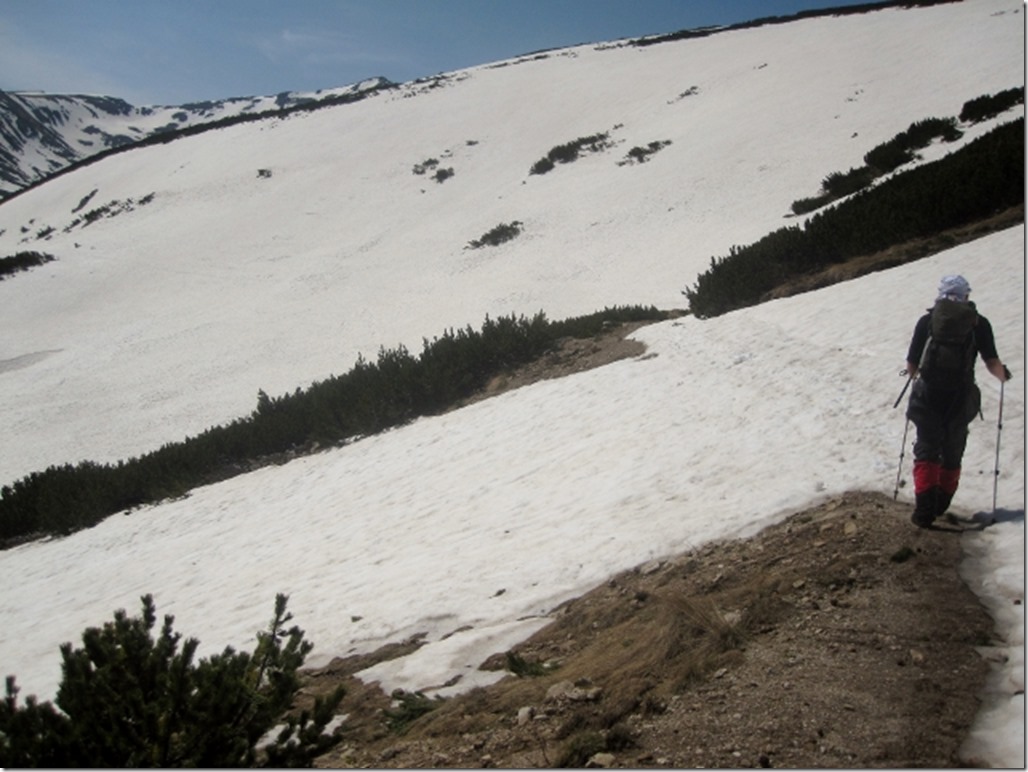
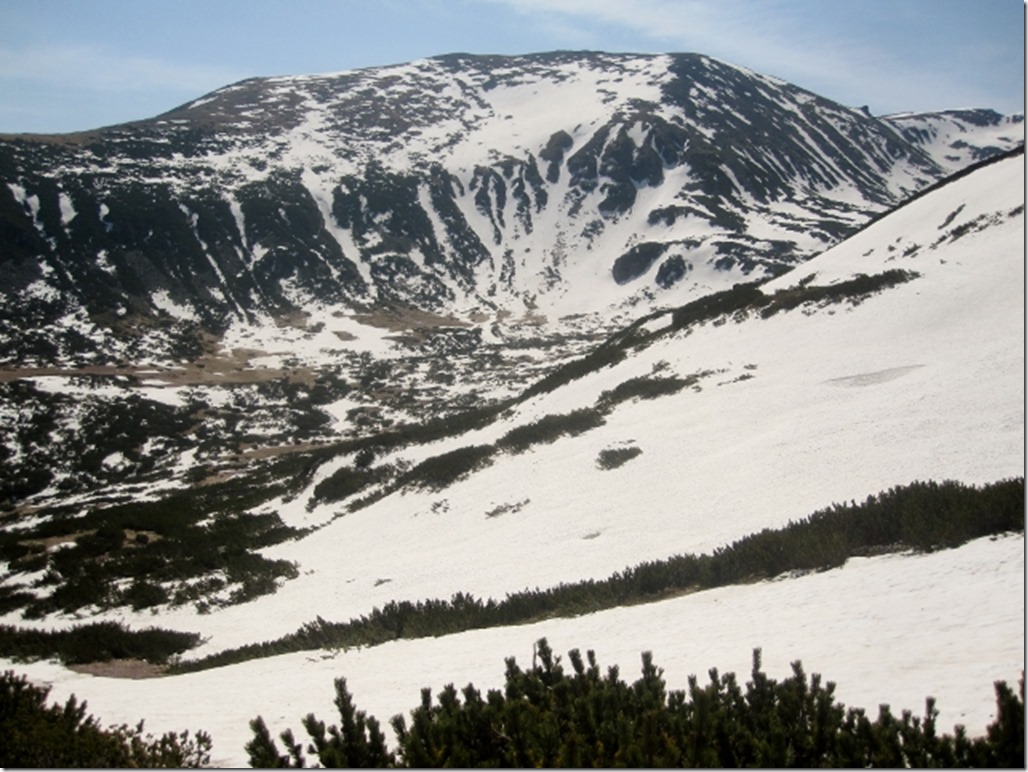
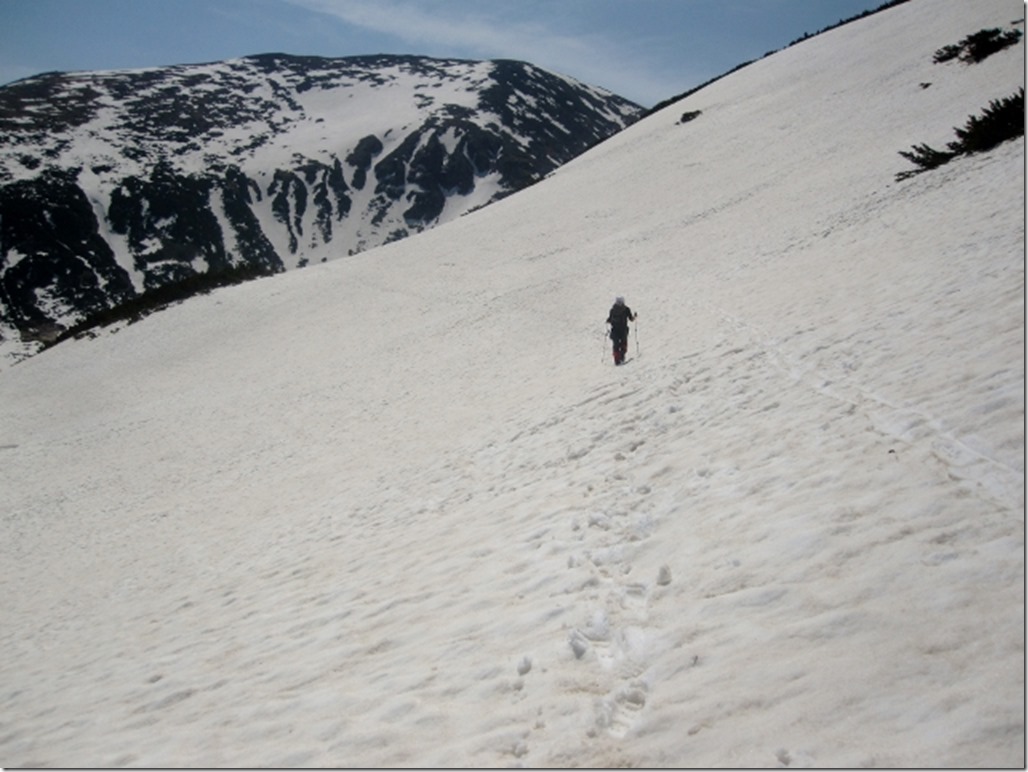
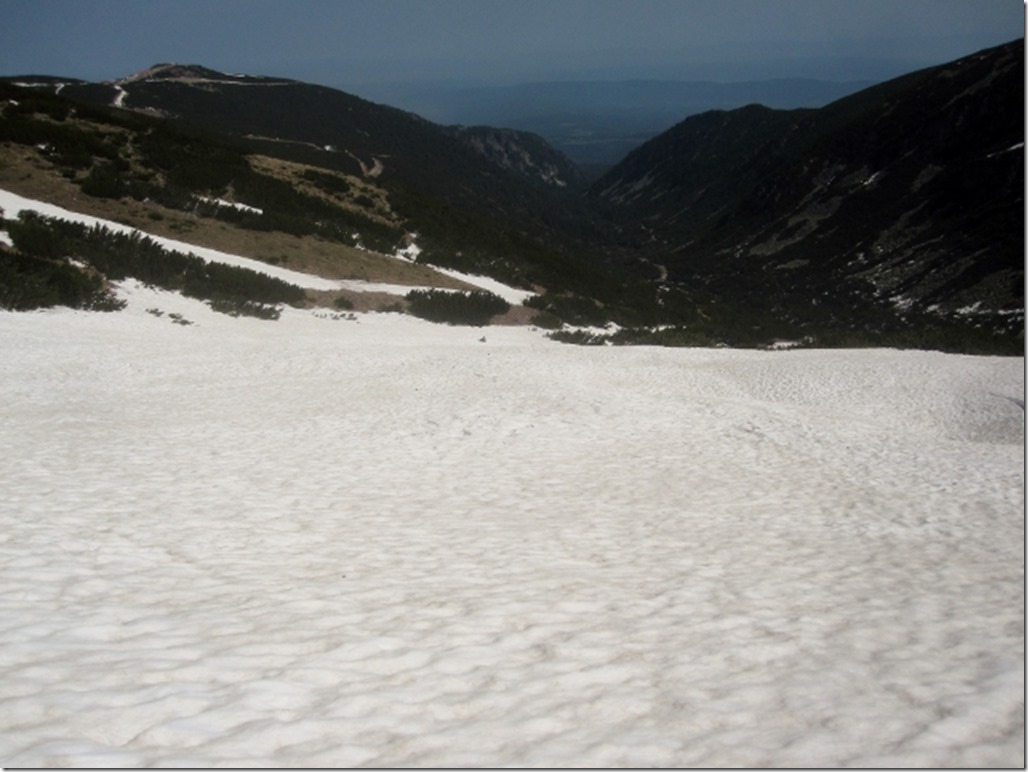
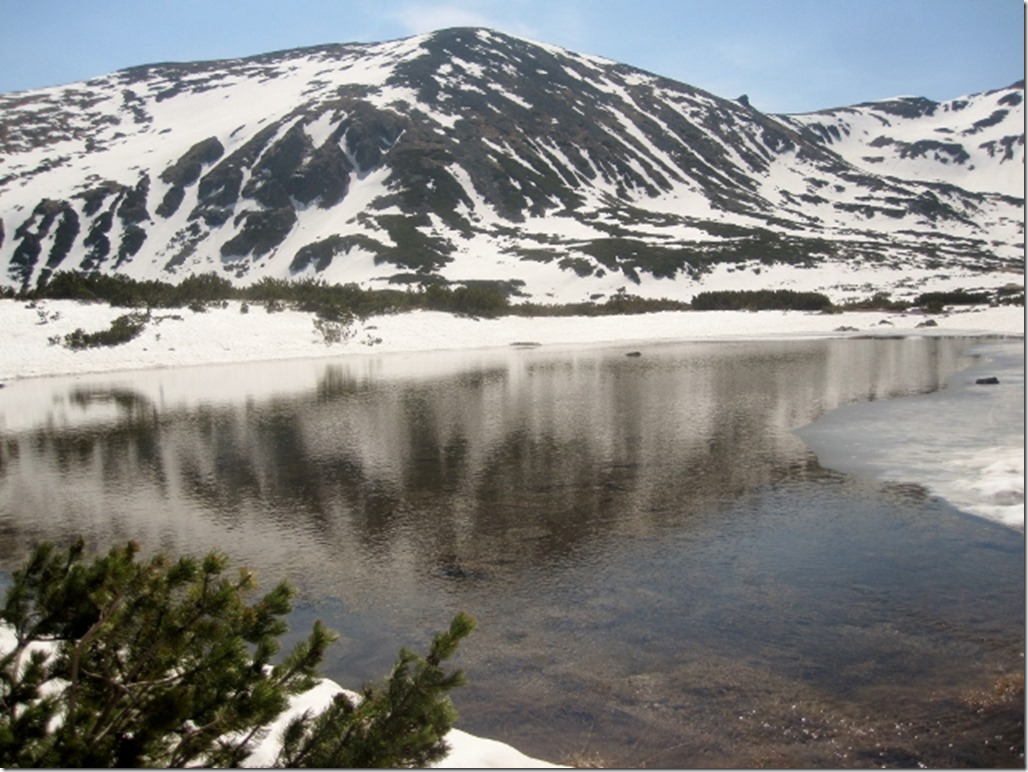
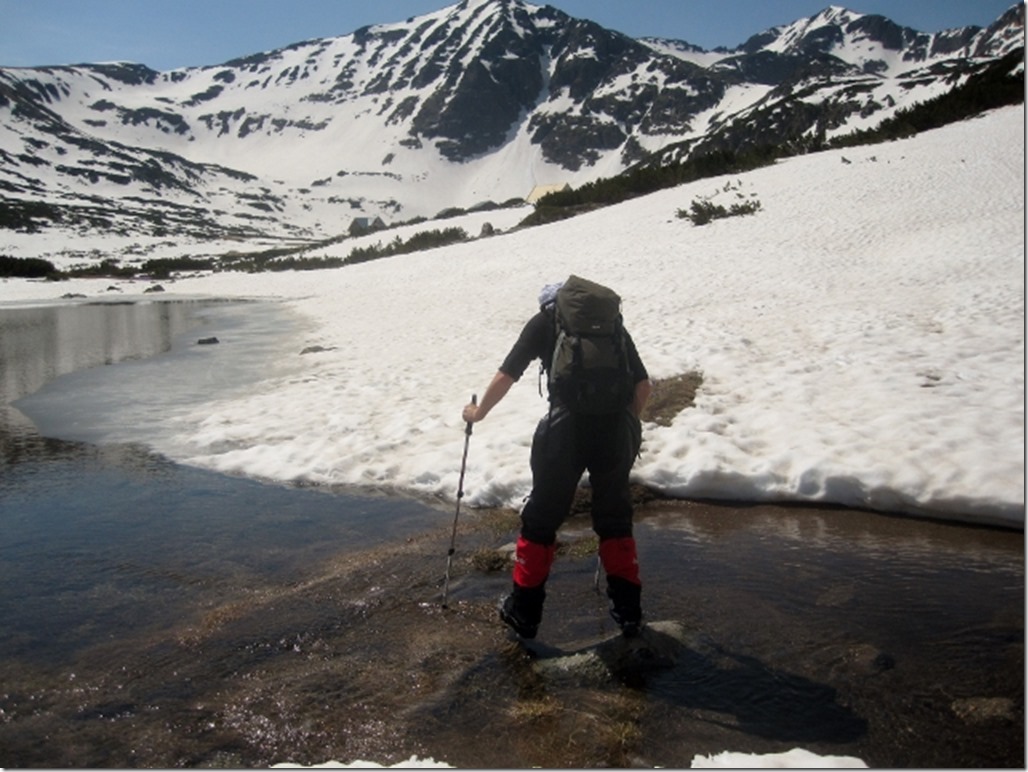
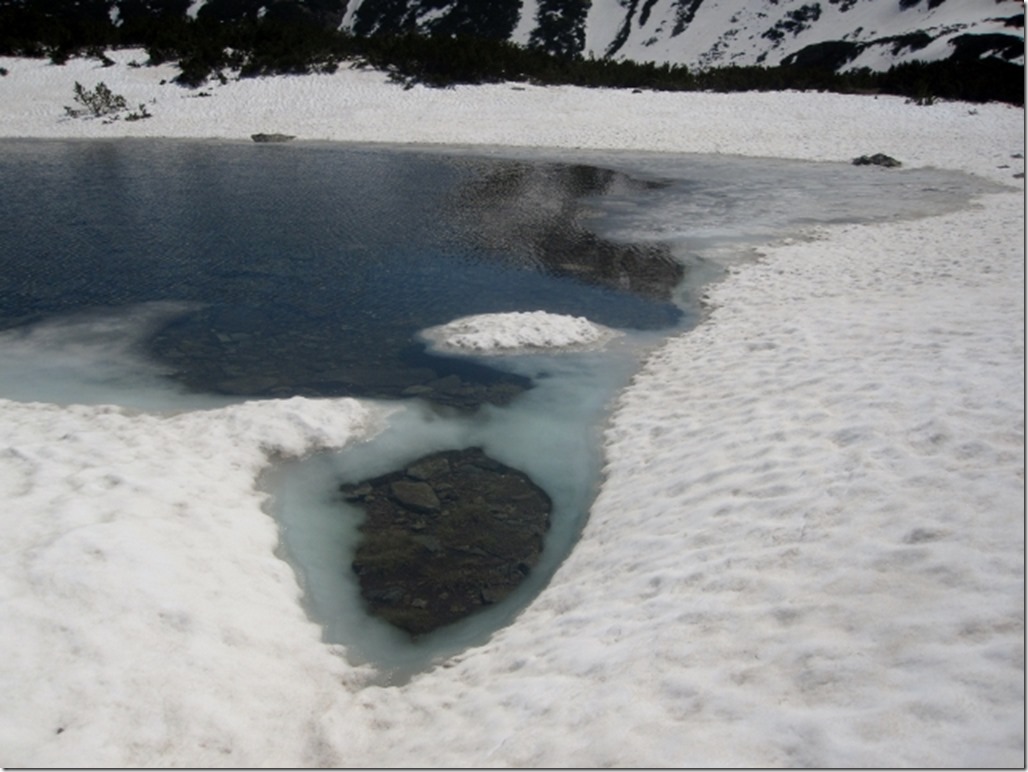
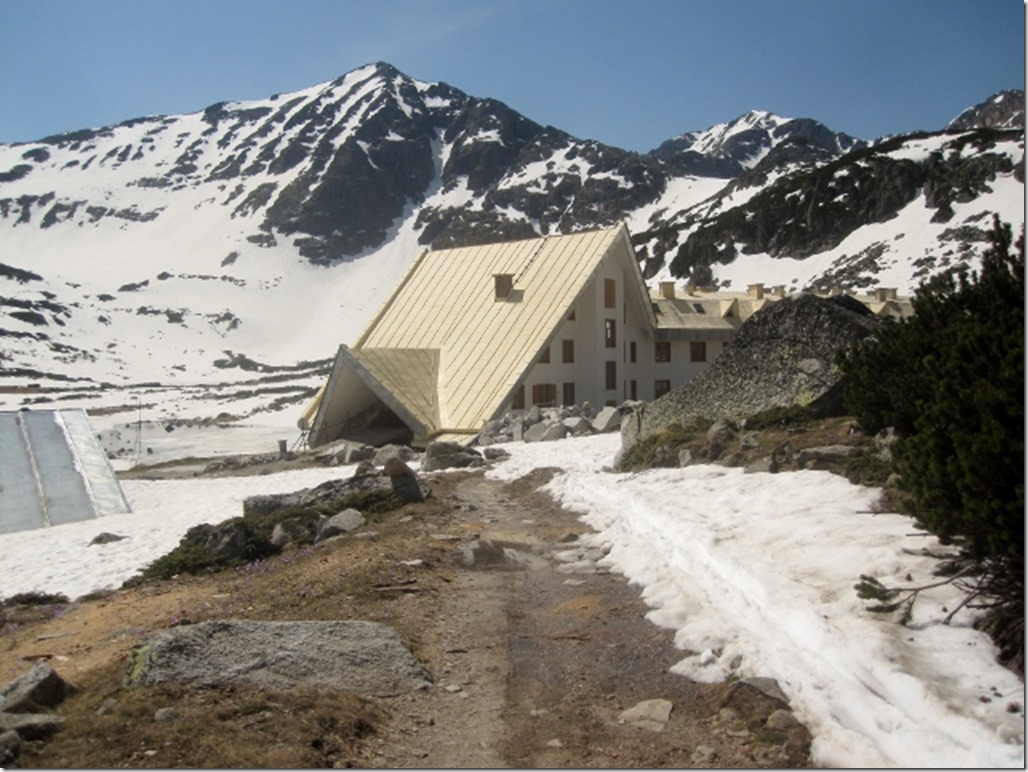
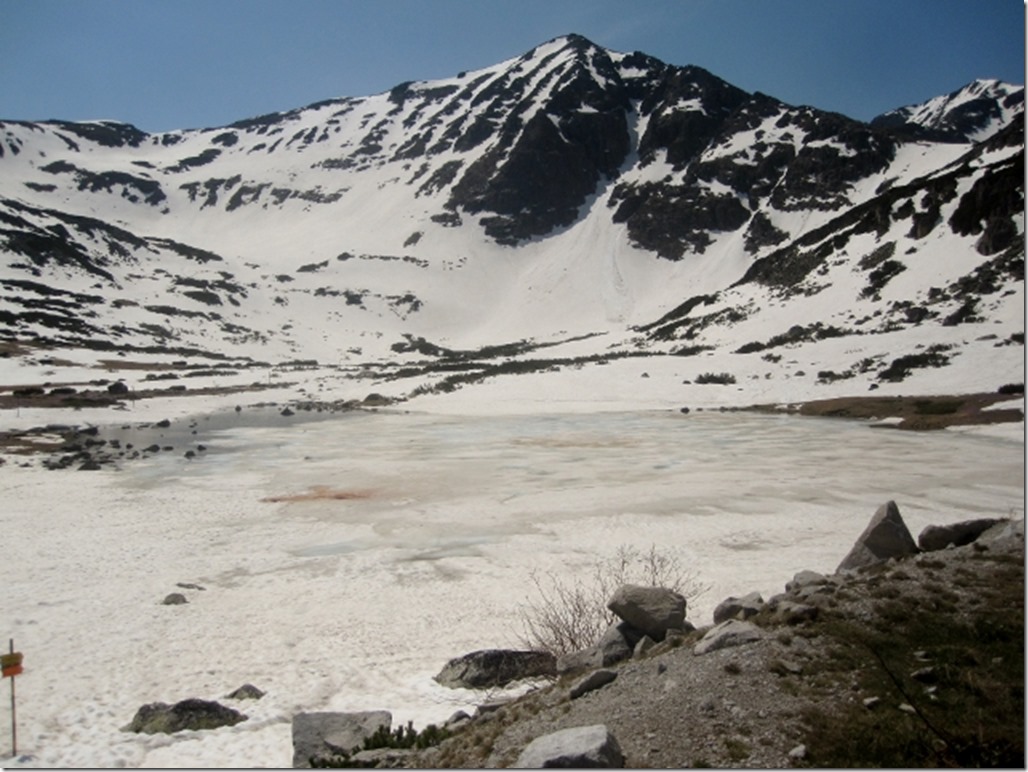
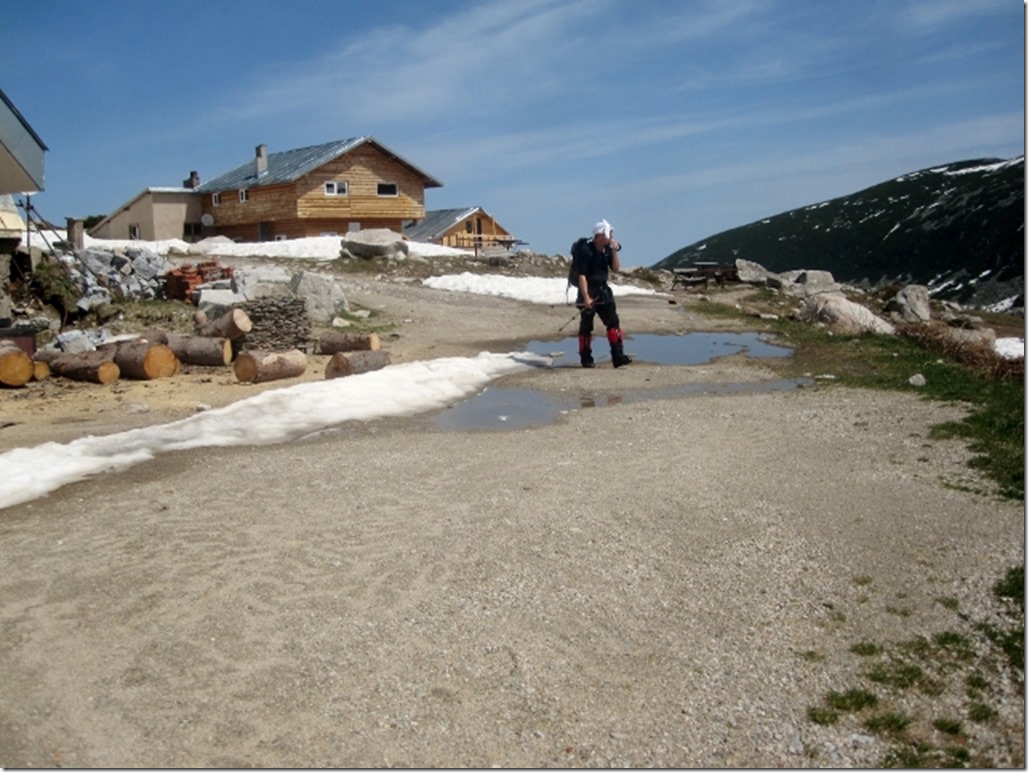
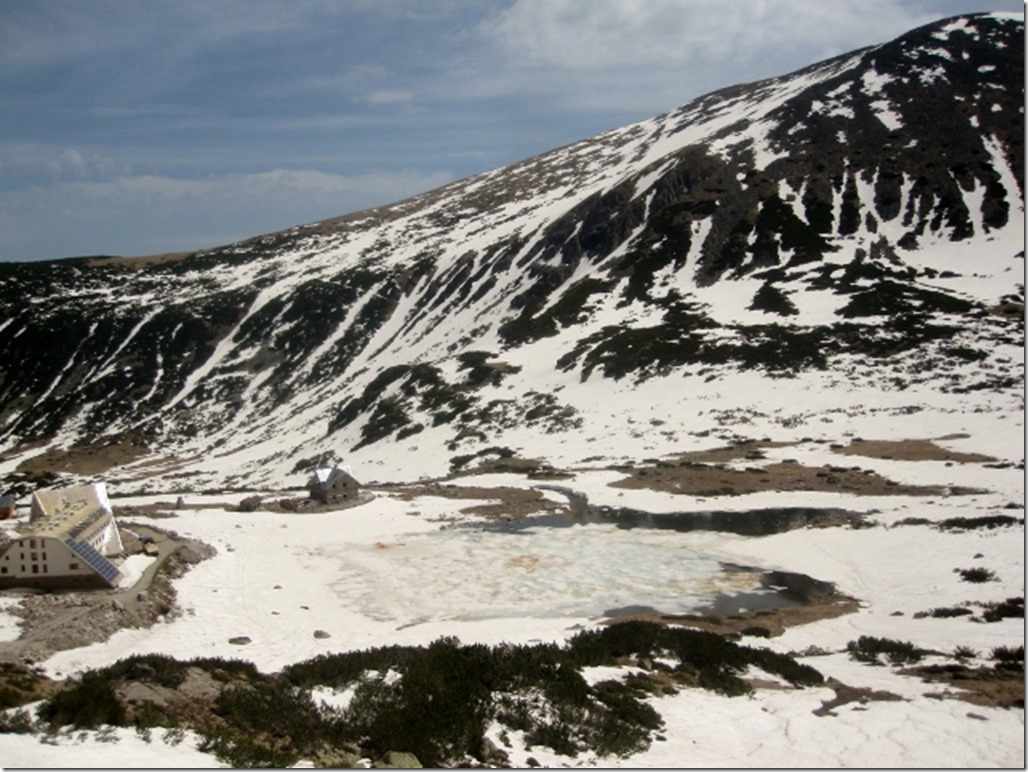
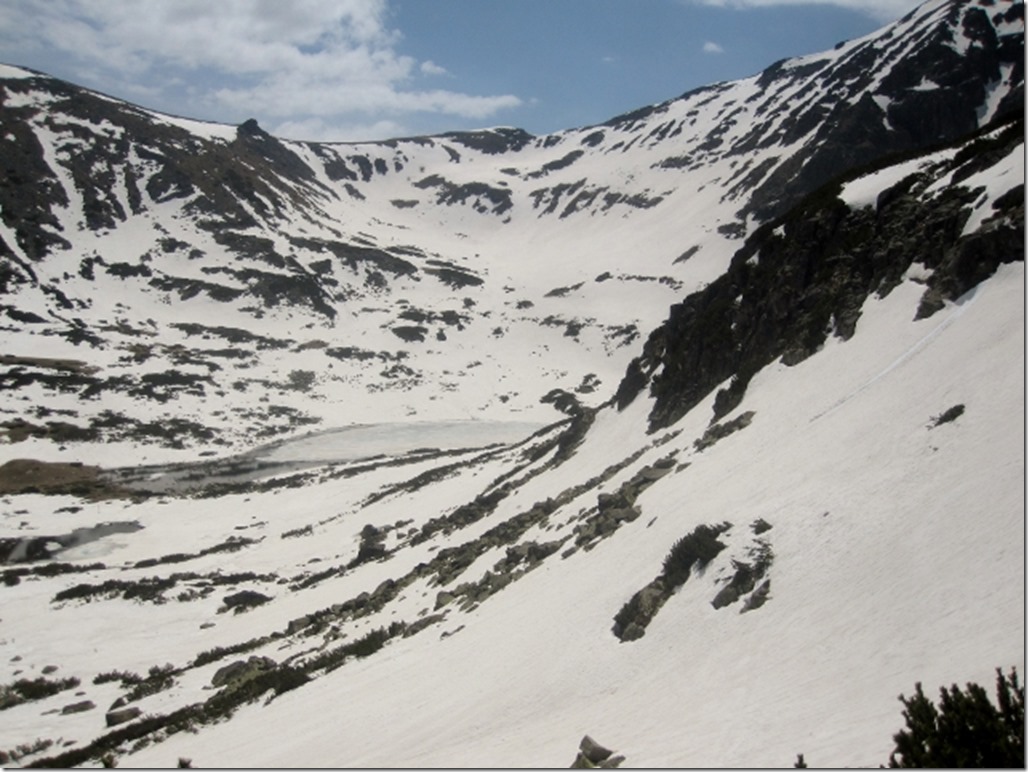
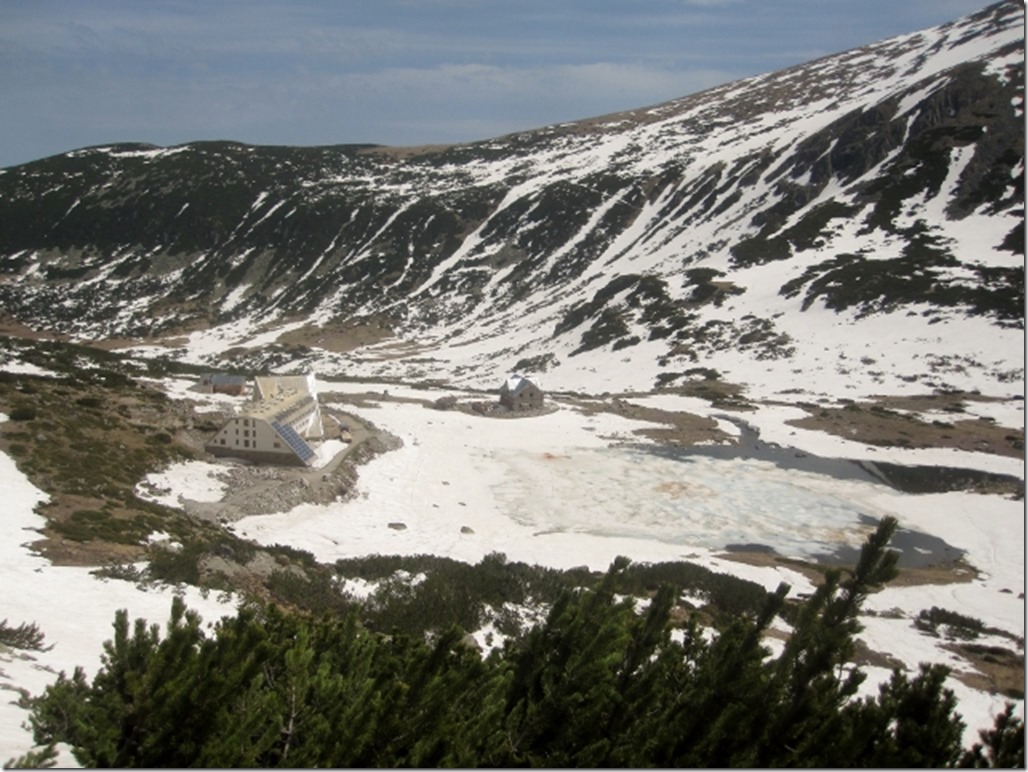
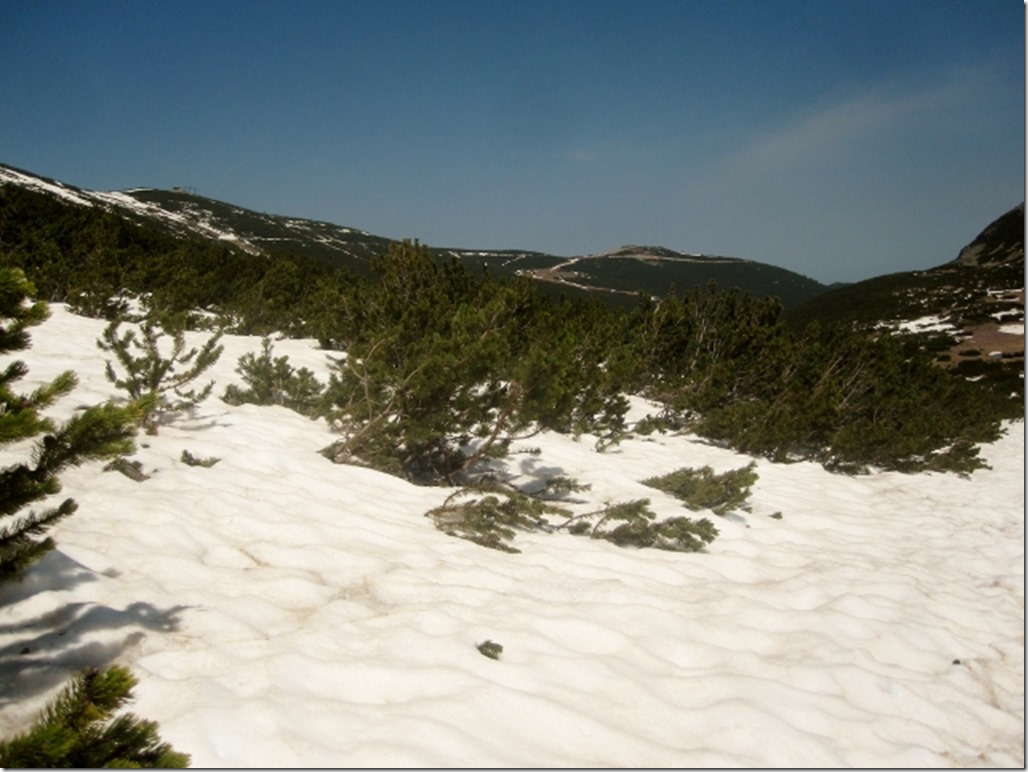
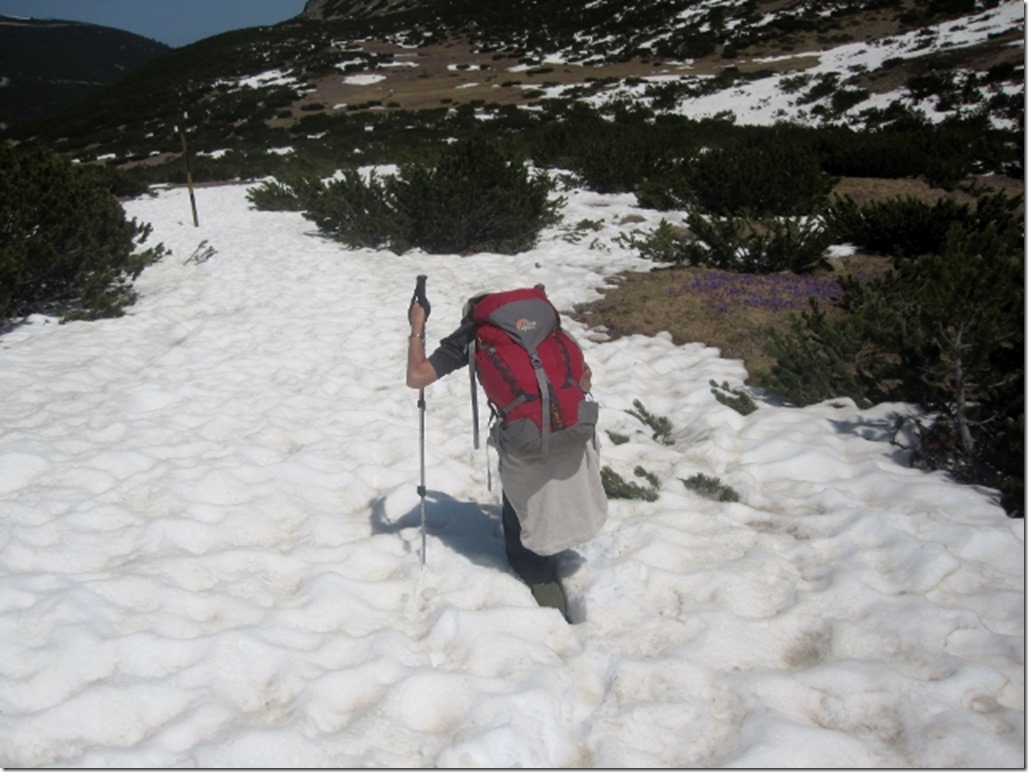
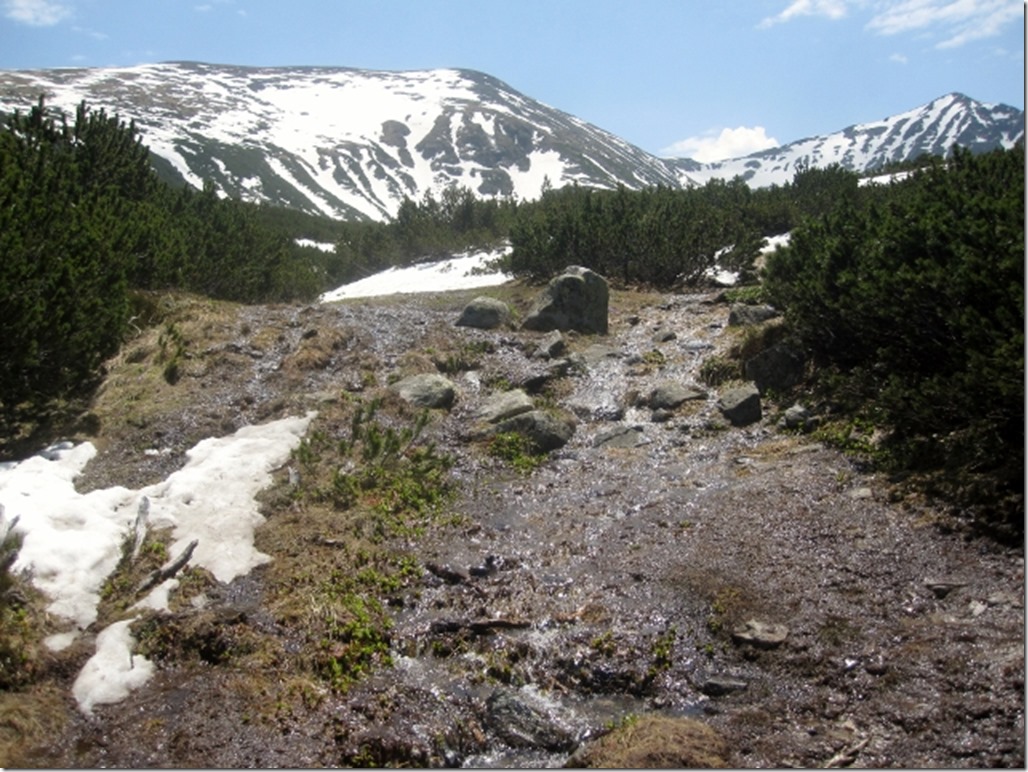
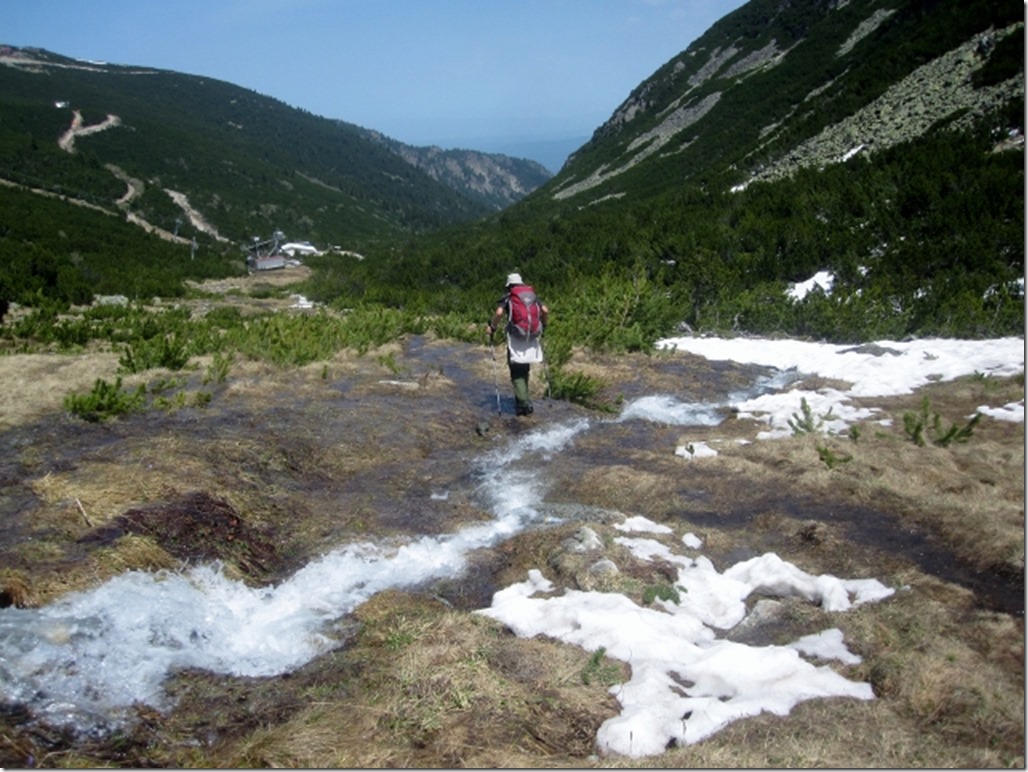
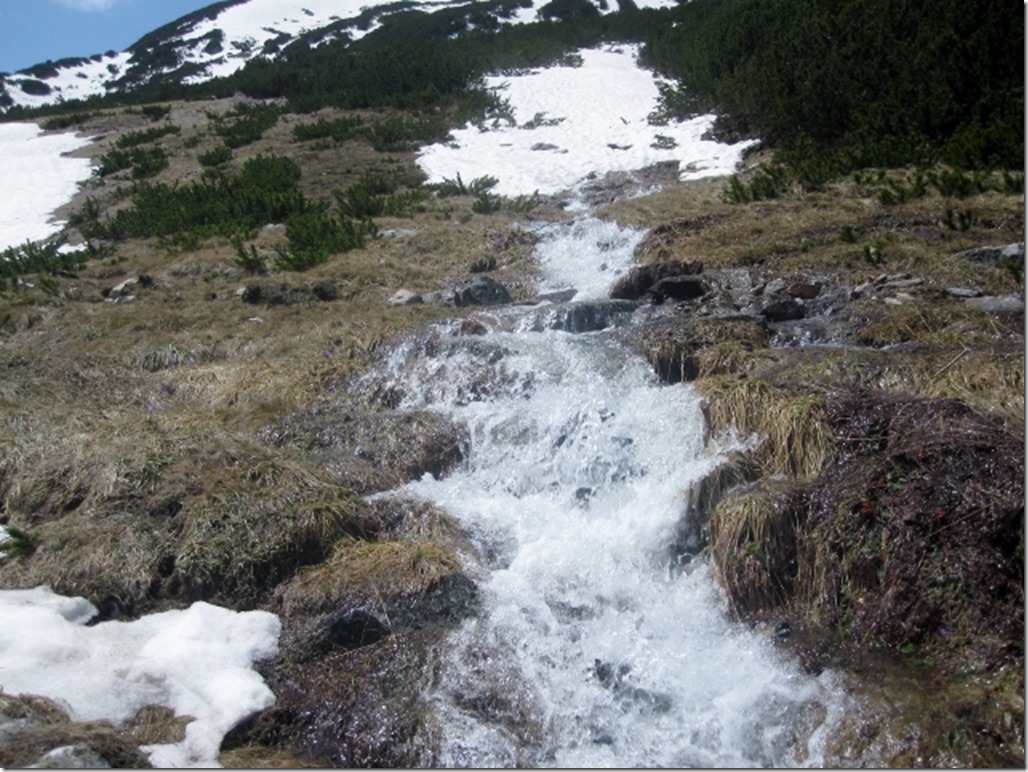
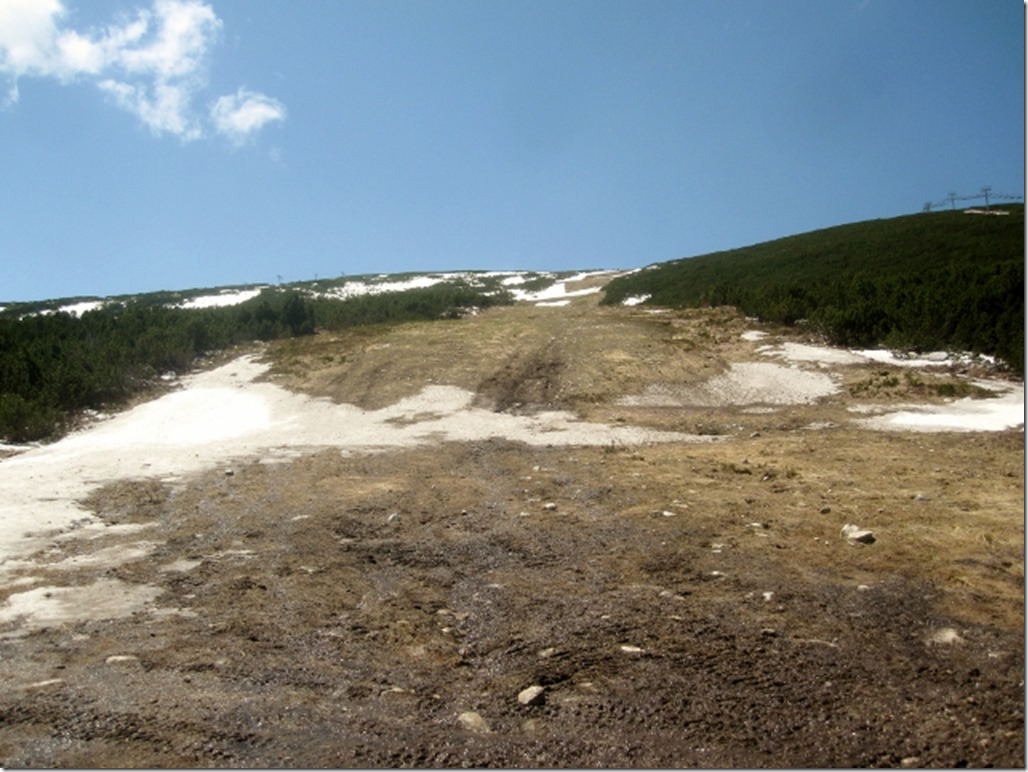
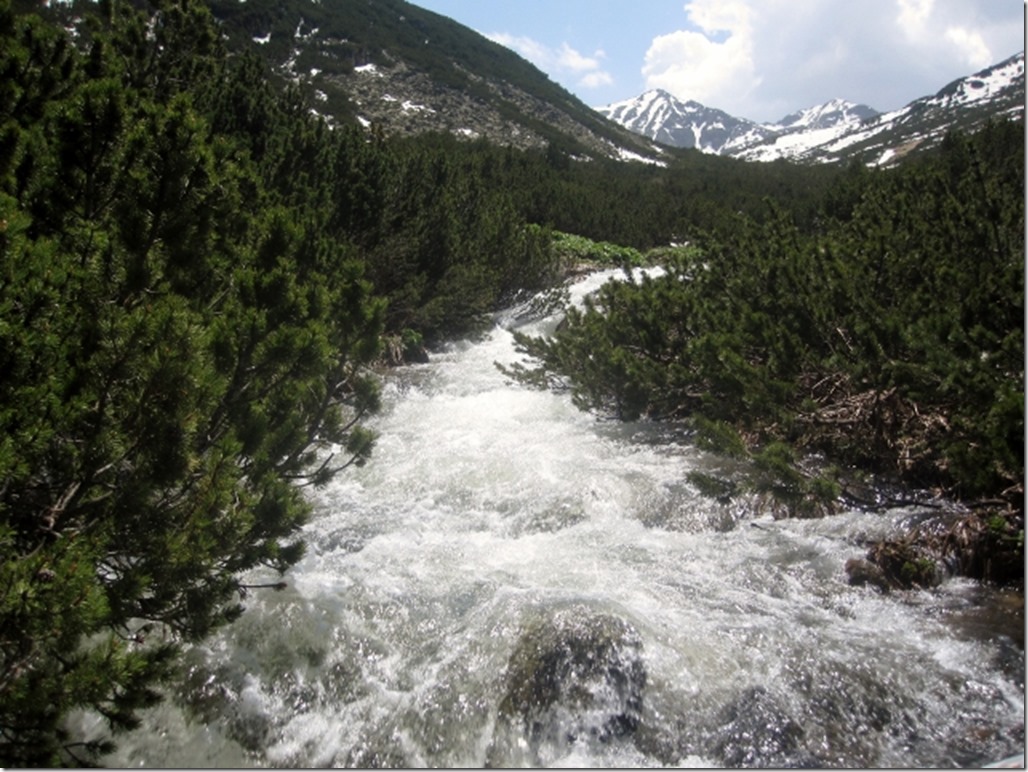
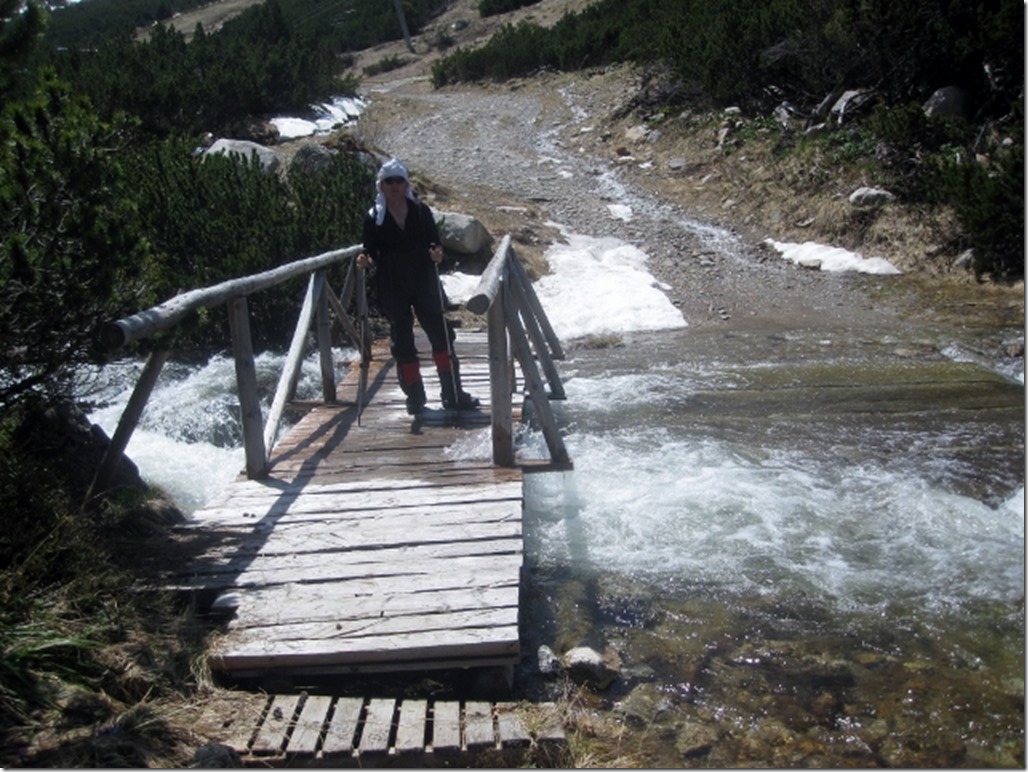
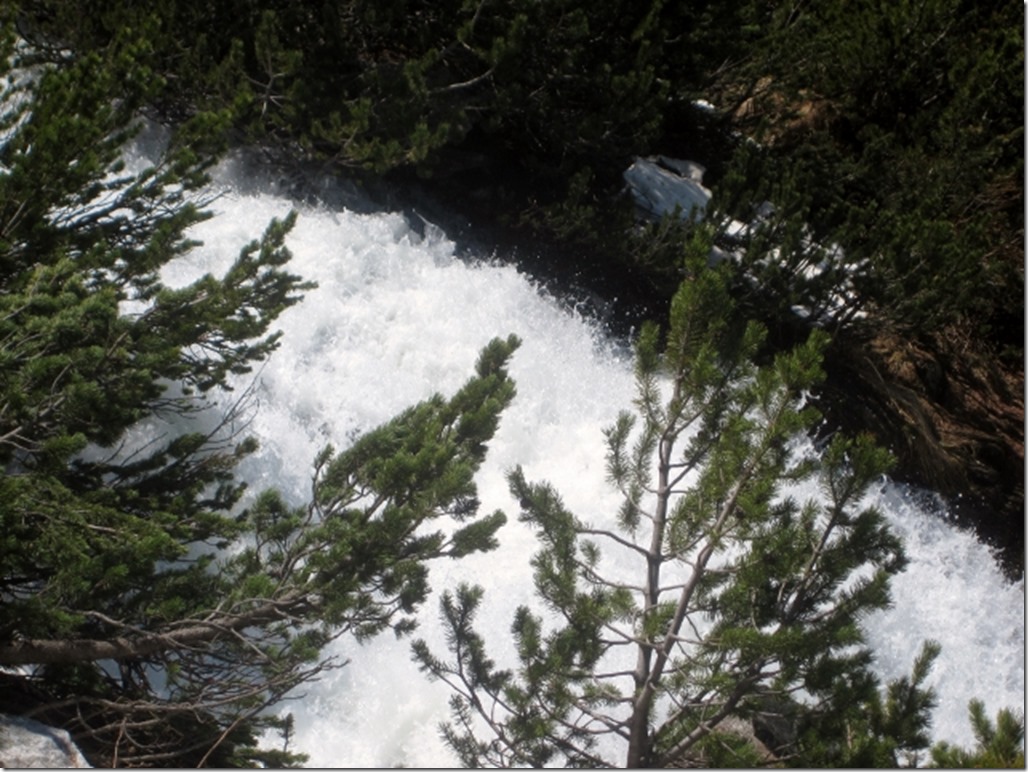
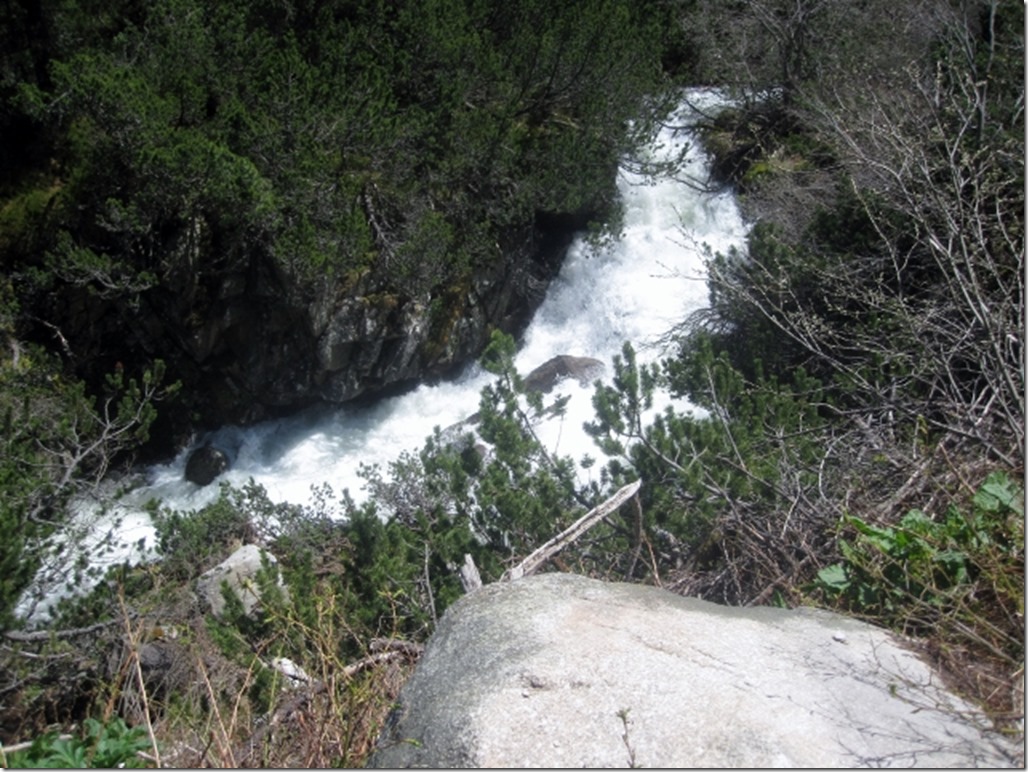
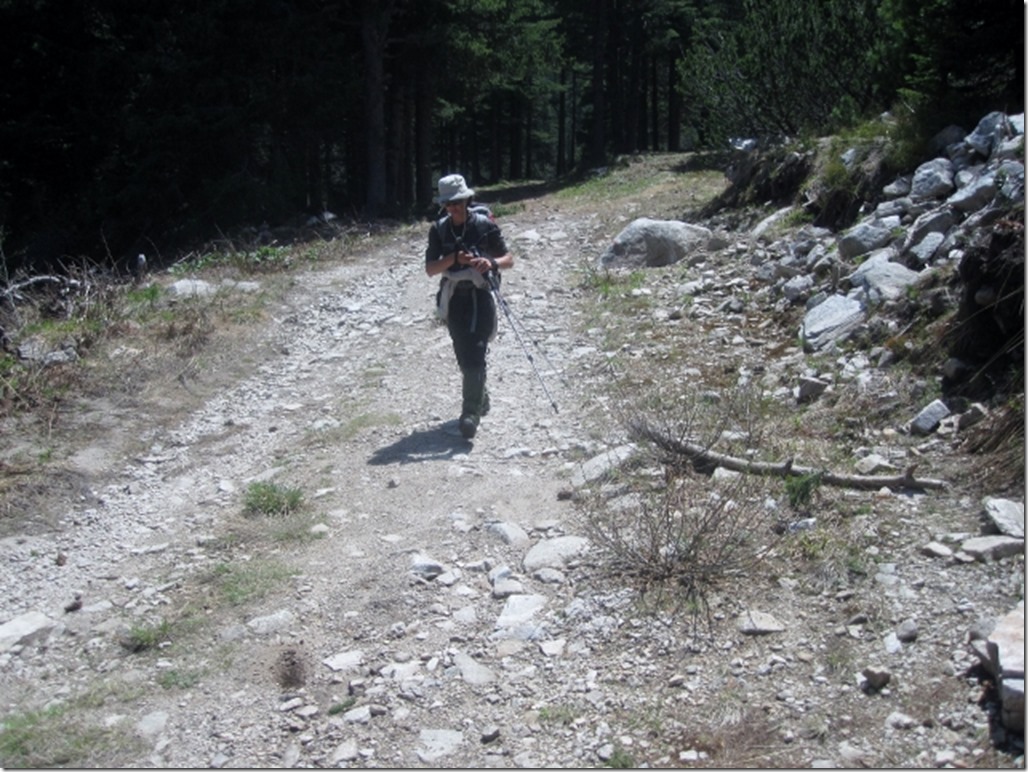
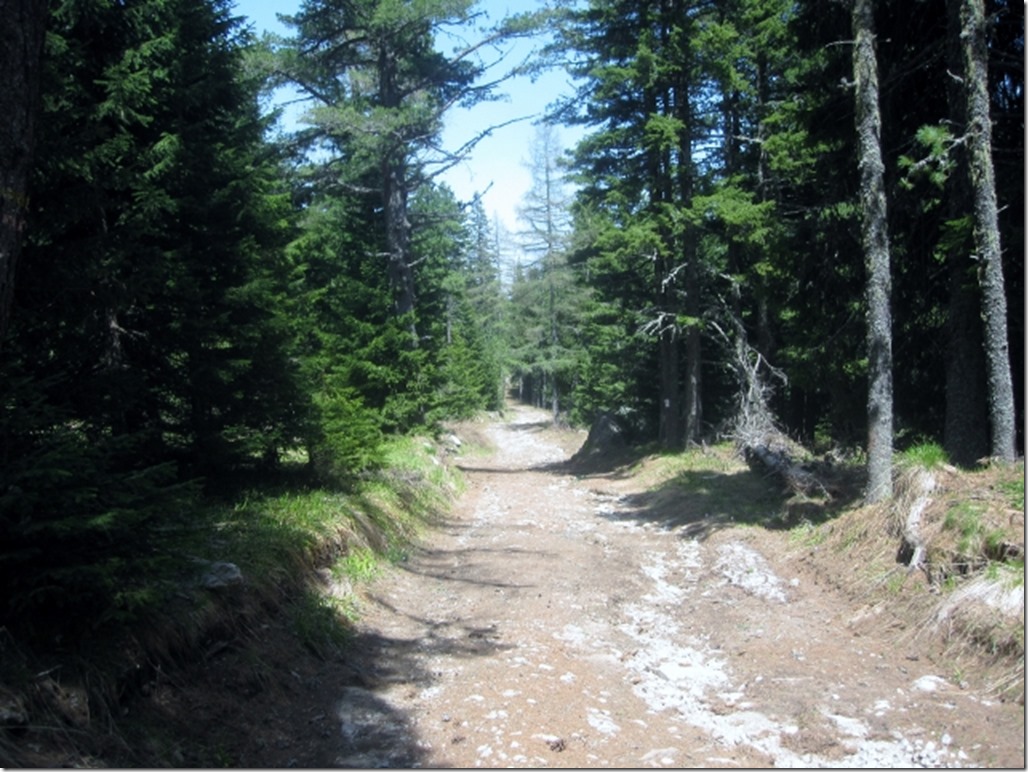
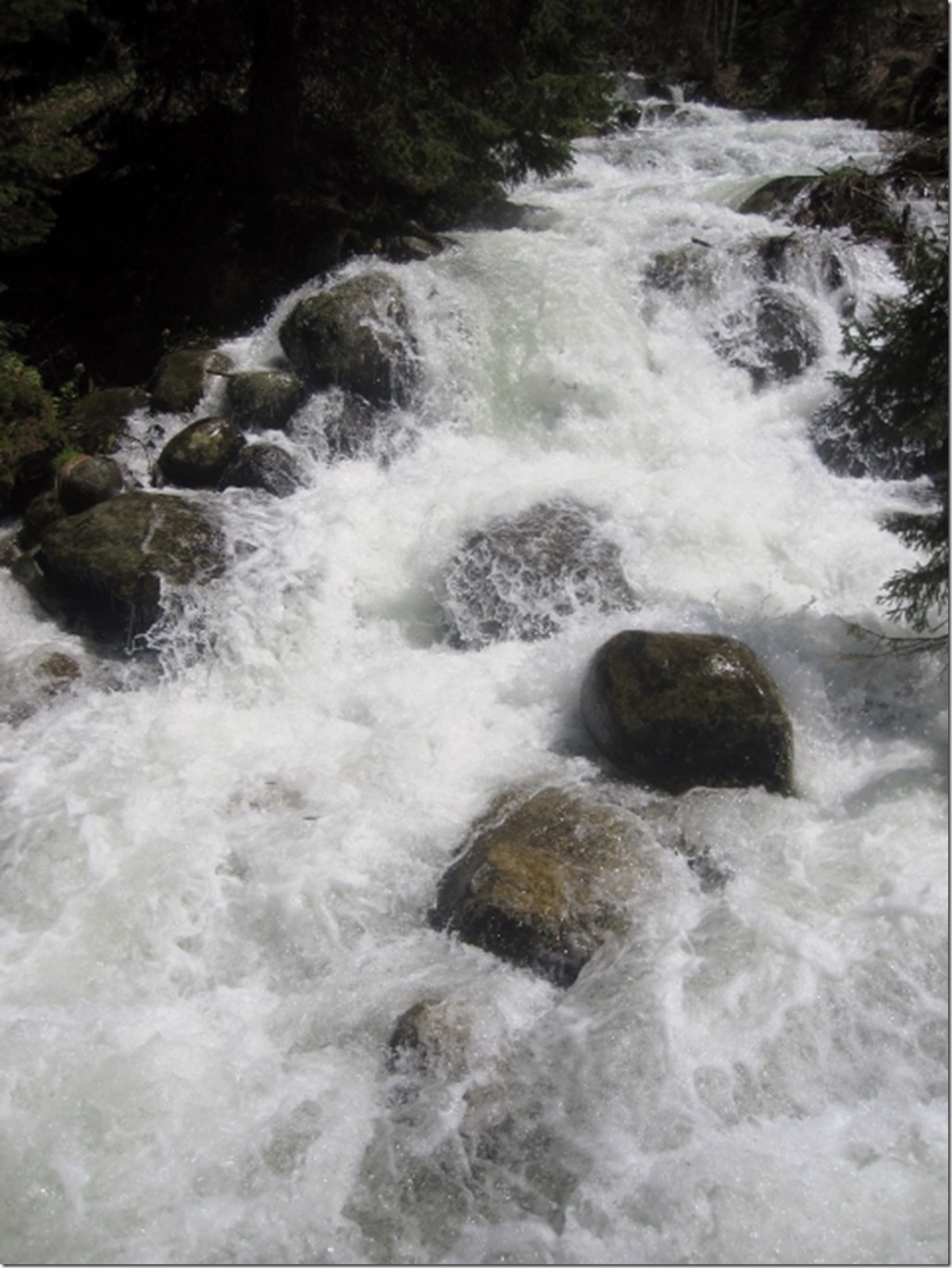






Que paisajes más bonitos, pero que pesado debe ser caminar sobre ella, que sera cuando llegue la temporada.
Otro refugio encantador, como encantador el río sobre todo donde esta helado, ( para patinar se entiende) para cruzar se debe sentir un poco de respeto,en cualquier momento se puede hundir el pie .
Que pena que no pudieramos subir. pero nos hubieramos tirado alli todo el dia, y luego bajar